Contents
- 1. Users Manual 1
- 2. Users Manual 2
- 3. Users Manual 3
Users Manual 3
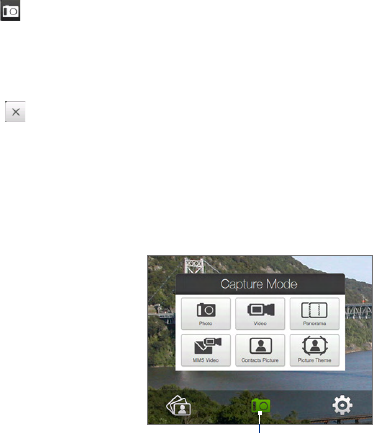
11.1 Taking Photos and Videos
Use Camera to take photos and record video clips. You can either use
the main (back) camera or second (front) camera to take photos or shoot
videos.
To open the Camera screen
On the Home screen, slide to the Photos and Videos tab and then tap
the camera icon ( ). The screen orientation automatically switches to
landscape mode when you open Camera.
Tip You can also tap Start > Programs > Camera to open the Camera program.
To exit the Camera
Tap the Exit icon ( ) on the Camera screen. Tap the screen to show the
Camera screen icons.
Capture modes
The camera on your device allows you to capture pictures and video clips by
using various built-in modes that provide you flexibility in taking your shots.
To change the capture mode
• Press NAVIGATION left or
right (Landscape orientation).
• Tap the middle icon at the
bottom of the screen (the
icon displayed is based on the
current Capture mode.)
On the on-screen menu, tap
the Capture mode you want
to use.
Current Capture mode
170 Experiencing Multimedia
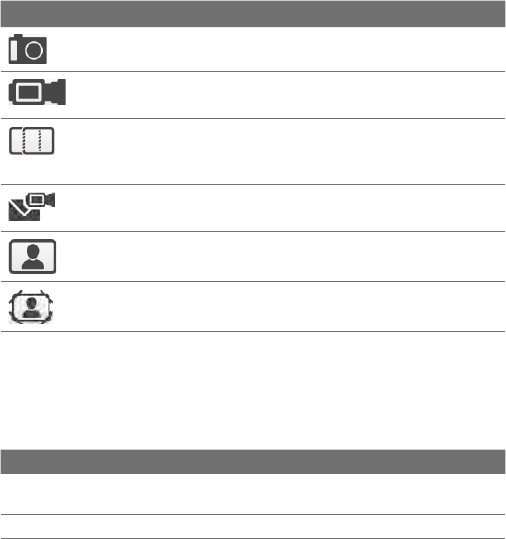
You can select from the following capture modes:
Icon Capture Mode
Photo Captures standard still images.
Video Captures video clips, with or without accompanying
audio.
Panorama Captures a sequence of still images continuously
in one direction, and allows stitching of all the images to
create a panoramic view of a scenery.
MMS Video Captures video clips suitable for sending with
MMS messages.
Contacts Picture Captures a still image and gives you the
option to immediately assign it as a Photo ID for a contact.
Picture Theme Captures still images and places them within
frames.
Note When using the second camera to capture, you can only use Photo, Video,
MMS Video, Contacts Picture, and Picture Theme modes.
Supported file formats
Using the available capture modes, the camera in your device captures files
in the following formats:
Capture mode Format
Photo / Contacts Picture /
Picture Theme / Panorama
JPEG
Video / MMS Video H.263 (.3gp) ; MPEG-4 (.mp4)
Experiencing Multimedia 171
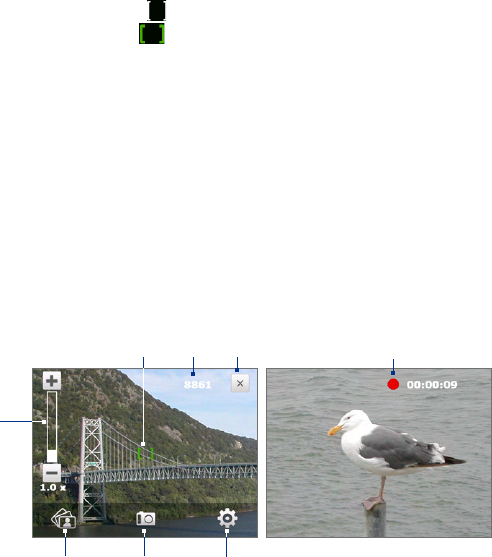
172 Experiencing Multimedia
Camera controls
The camera comes with an auto-focus function to let you capture sharp and
crisp photos and videos of your subjects. Depending on the Shoot Option
you have chosen, you will need to either touch or press the ENTER button
to activate auto-focus. When auto-focus is activated, it is indicated by a
flashing white bracket ( ). When focus is set, the bracket changes to a
steady green bracket ( ).
Note For more information about the different shoot options, see “Advanced
Options” in this chapter.
By default, you only need to press the ENTER button once to activate
auto-focus and to take the photo or start capturing video. For example, in
Photo mode, press ENTER to activate auto-focus; when focus is set, Camera
automatically takes the shot.
Notes • In Video or MMS Video mode, press ENTER again to stop recording.
• In Picture Theme or Panorama mode, press ENTER for each shot you
need to take.
On-screen controls and indicators
Tap the screen to display the controls and indicators.
When capturing in Video and MMS
Video modes
Photo, Video, MMS Video, and
Contacts Picture modes
6 8
42
1
3
57

Experiencing Multimedia 173
1 Zoom control. Tap to zoom in, or to zoom out.
Tip You can also press NAVIGATION up/down (Landscape orientation)
or slide your finger clockwise or counterclockwise on the center
NAVIGATION CONTROL to zoom in or out.
2 Album. Tap to open Album. See “Viewing Photos and Videos Using
Album” for details.
3 Capture mode. Displays the current capture mode. Tap to open an
on-screen menu where you can choose the capture mode.
4 Menu. Tap to open the Camera Settings screen. See “Menu Panel” for
details.
5 Exit. Tap to exit the Camera program.
6 Remaining information indicator. In Photo, Contacts Picture, Picture
Theme, and Panorama modes, this shows the remaining/available
shots of pictures based on the current settings.
In Video and MMS Video modes, this shows the remaining duration
that can be recorded. While recording video, this shows the recorded
duration.
7 Auto-focus indicator. Displays a flashing bracket ( ) when
focusing. When focus is set, the flashing bracket changes to a steady
green bracket ( ).
8 Recording indicator. Flashes when recording a video.
Picture Theme mode
910
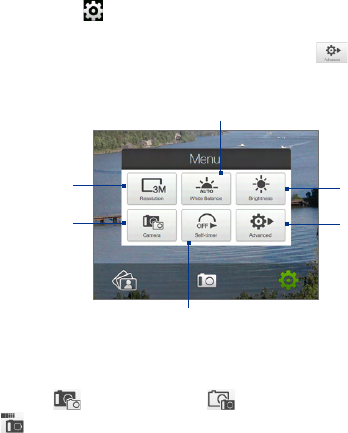
174 Experiencing Multimedia
9
Template Selector icon. In Picture Theme mode, tap to toggle
among different templates.
10
Progress indicator. In Picture Theme and Panorama modes, this
shows the number of consecutive shots.
Menu Panel
The Menu Panel provides a quick way of adjusting most common camera
settings and lets you access more advanced camera settings. On the
Camera screen, tap to open the Menu Panel. To adjust a setting, keep
tapping a button on the panel, for instance, Resolution, to cycle through
the available settings. To access advanced options, tap .
Note The available settings on the panel depend on the selected Capture mode.
2
15
4
3
6
1 Resolution. Tap to change the resolution (capture size). See the table
in the following pages for the supported resolutions.
2 Camera. Tap to select the camera to use. You can choose from main
camera ( ), second camera ( ), and second camera flip
( ).
3 Self-timer. Tap to set the self-timer to 2 seconds, 10 seconds, or Off
when in the Photo or Contacts Picture mode. When you press the
ENTER button to capture a still image, it starts to count down, then
captures a still image after the time expires.
4 Advanced. Tap to open the advanced camera settings. See “Advanced
Options” for details.
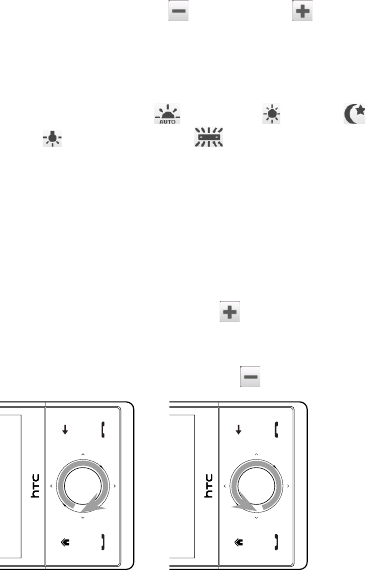
Experiencing Multimedia 175
5 Brightness. Tap to open the Brightness bar at the bottom of the
screen. On the Brightness bar, tap to decrease, or to increase
the brightness level. Tap outside the Brightness bar to apply the
change.
6 White Balance. White balance enables the camera to capture colors
more accurately by adjusting to different lighting conditions. White
balance settings include: Auto ( ), Daylight ( ), Night ( ),
Incandescent ( ), and Fluorescent ( ).
Zooming
Before capturing a photo or a video clip, you can zoom in to make the
object in focus move closer, or zoom out to make the object move farther
away.
To zoom in
Slide your finger around the NAVIGATION CONTROL clockwise, press
NAVIGATION up (Landscape orientation), or tap .
To zoom out
Slide your finger around the NAVIGATION CONTROL counterclockwise, press
NAVIGATION down (Landscape orientation), or tap .
Zoom In Zoom Out
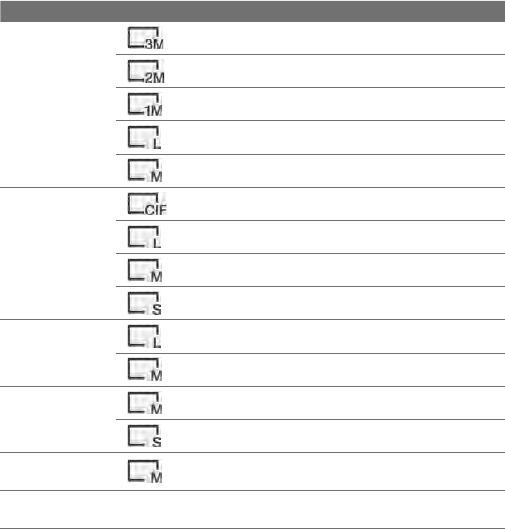
176 Experiencing Multimedia
The camera zoom range for a photo or a video clip depends on the capture
mode and resolution. Refer to the table for more information.
Capture mode Resolution Zoom range
Photo
3M (2048 x 1536) 1.0x to 2.0x
2M (1600 x 1200) 1.0x to 2.0x
1M (1280 x 960) 1.0x to 2.0x
Large (640 x 480) 1.0x to 2.0x
Medium (320 x 240) 1.0x to 4.0x
Video
CIF (352 x 288) 1x and 1.5x
Large (320 x 240) 1x and 1.5x
Medium (176 x 144) 1x and 1.5x
Small (128 x 96) 1x and 1.5x
Panorama Large (640 x 480) 1x and 2x
Medium (320 x 240) 1x, 2x and 4x
MMS Video Medium (176 x 144) 1x and 1.5x
Small (128 x 96) 1x and 1.5x
Contacts
Picture Medium (240 x 320) 1.0x to 4.0x
Picture Theme Determined by the current
template
Depends on the size of the
selected template
Note For capture size settings and zoom ranges when using the second camera,
please refer to the online help.
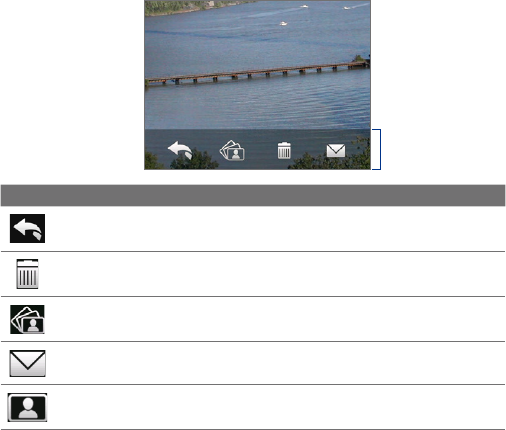
Experiencing Multimedia 177
The Review screen
After capturing, the Review screen lets you view, send, or delete the photo
or video clip by tapping an icon at the bottom of the screen.
Review screen
icons
Icon Function
Back Return to the live Camera screen.
Delete Delete the captured image or video.
View View the captured image or video in the Album program.
Send Send the captured image or video via e-mail or MMS.
Assign to Contact After capturing in Contacts Picture mode, tap this
icon to assign the photo to a selected contact.
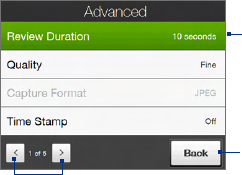
178 Experiencing Multimedia
Advanced Options
The Advanced Options let you adjust options for your selected capture
mode and set Camera program preferences. Access the Advanced Options
by tapping Advanced on the Menu Panel.
You can either tap on-screen or press NAVIGATION up/down (Landscape
orientation) to navigate through the Advanced Options screen.
Tap to go through the different
Advanced Camera Settings screens.
Tap to go back to the
Camera screen.
Tap an item
to change the
setting.
• Quality. Select the JPEG image quality level for all captured still
images. Choose from Basic, Normal, Fine, and Super Fine.
• Capture Format. Select the desired file format.
• Time Stamp (Photo mode). Choose whether or not to include the
shooting date and time on captured photos.
• Storage. Select where you want to save your files. You can either save
the files to the main memory or to the internal storage.
• Keep Backlight. Turn the backlight on or off. This overrides your
device backlight settings while you are using the camera.
• Shutter Sound. Choose whether or not you want the camera to make
a shutter sound when you press the ENTER button.
• Shoot Option. The camera comes with an auto-focus feature that is
activated when the ENTER button is either touched or pressed.
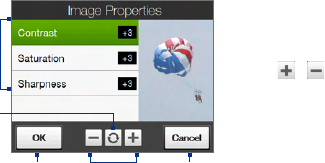
Experiencing Multimedia 179
• Touch and Press. Requires you to touch the ENTER button to
activate the auto-focus; when focus is set, press the ENTER button
to take the shot.
• Touch. Requires you to touch the ENTER button to activate auto-
focus; when focus is set, Camera automatically takes the shot.
• Full Press. Requires you to press the ENTER button to activate
auto-focus; when focus is set, Camera automatically takes the shot.
• Review Duration. Set a time length for displaying the captured
image/video on the Review screen. Select No Limit if you do not want
to impose a time limit. Select No Review to immediately return to the
live Camera screen after capturing and saving.
• Image Properties. This option lets you adjust the capture properties,
such as Contrast, Saturation, and Sharpness.
1Tap a property to adjust.
2Tap to reset all properties to
their default values.
3Tap to save the settings.
4Tap / or press
NAVIGATION left/right
(Landscape orientation) to
increase/decrease the value.
5Tap to close the submenu
without applying and saving the
changes.
2
34
1
5
• Effect. Choose a special effect such as Grayscale, Sepia, or others, to
apply to your photos or video clips.
• Metering Mode. Select a metering mode to allow the camera to
measure the amount of light and calculate the best-fit exposure value
before capturing. Choose either Center Area to measure light using
the center area of the subject, or Average to measure light using the
area around the subject.
• Prefix. When Default is selected as the prefix, the file name of each
new captured file is set to “IMAGE” or “VIDEO” followed by a sequential
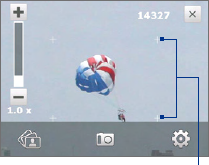
180 Experiencing Multimedia
number, for example: IMAGE_001.jpg. You may also choose to name
files using either the current Date or Date & Time as the prefix.
• Counter. To reset the file naming counter back to 1, tap Reset.
• Flicker Adjustment. When taking indoor shots, flicker on the camera
screen may be caused by inconsistencies between the vertical scan
rate of the camera display and the flicker frequency of fluorescent
lighting. To reduce flicker, you can change the flicker adjustment
setting to Auto or to the proper frequency (50Hz or 60Hz) of the
power in the country where your device is being used.
• Grid (Photo mode). Choose
whether or not to show a grid on
the Camera screen. Showing a grid
helps you frame and center your
subject easily and accurately.
• Record with Audio (Video and
MMS Video mode). Select On to
record audio with the captured
video clips, or select Off to capture
video without audio. Grid marks
• Template (Picture Theme mode). Select a template.
• Recording Limit (Video mode). Set the maximum duration or file size
for recording video.
• Template Folder (Picture Theme mode). By default, templates are
stored in the \My Documents\Templates folder on the device’s
Main Memory. If you transferred some templates to the internal
storage (via File Explorer), set this option to Main + Card to specify
that templates are located in both the main memory and the internal
storage.
• Show Reminder (Contacts Picture mode). Select On if you want the
Camera to always display a message that confirms whether or not to
assign the captured picture to a contact.
• Help. Tap to open the Camera program help file.
• About. Tap to display version and copyright information.
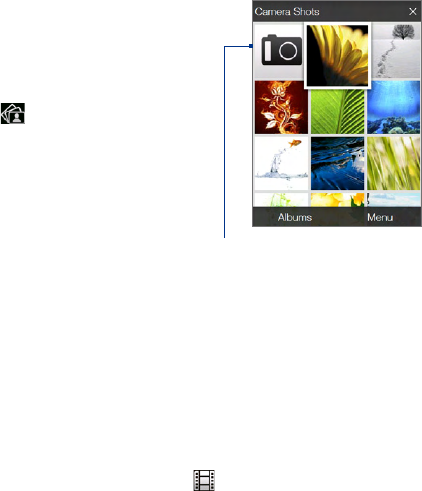
Experiencing Multimedia 181
11.2 Viewing Photos and Videos Using Album
Use Album to view images and videos in your device. Album offers a host
of features that let you rotate images, view your images as a slideshow, use
images as contact pictures, and more.
Note Album can only display files in the BMP, GIF, PNG, JPG, Animated GIF, 3GP,
MP4, and WMV formats.
To open Album
Do one of the following:
• On the Home screen, slide to
the Photos and Videos tab
and tap Album.
• In the Camera program,
tap .
• Tap Start > Programs >
Album.
Note When you open Album from
the Camera program, the
screen orientation of Album is
switched to landscape mode. Tap to open the
Camera program.
Select a photo or video to view
1. On the main Album screen, tap Albums and then select the album
to view. The contents of the album are then displayed on the main
Album screen.
2. Browse through the files by sliding your finger upward or downward.
3. Do one of the following:
• Tap an image to view it in full screen mode. See “View an image”
for details.
• Tap a video file (files with the icon) to play back the video file.
See “Play back video” in this chapter for details.
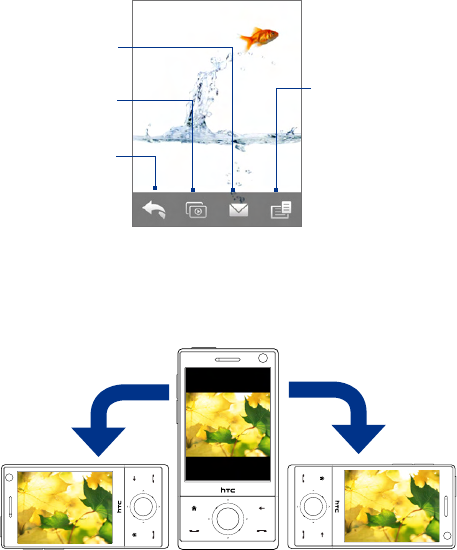
182 Experiencing Multimedia
• Select a still image and then tap Menu > Slideshow to view the
images in the album as a slideshow. Animated GIF and video files
will not be played back in the slideshow. See “To view still images
as a slideshow” in this chapter for details.
View an image
While viewing an image in full screen, tap the screen or press ENTER to
open the on-screen menu.
Tap to go back to
the main Album
screen, Photos
and Videos tab, or
Camera.
Tap to start the
slideshow.
Tap to send the
image using one
of the Messaging
accounts.
Tap to open a menu
where you can save the
screen image as a photo
for a contact, save the
current image as a new
file, delete the image, and
view file properties.
Tip You can delete multiple files at once by selecting Menu > Delete Items on
the main Album screen and then selecting the files to delete.
To rotate the image
While viewing images, you can automatically rotate the image by simply
turning your device sideways.
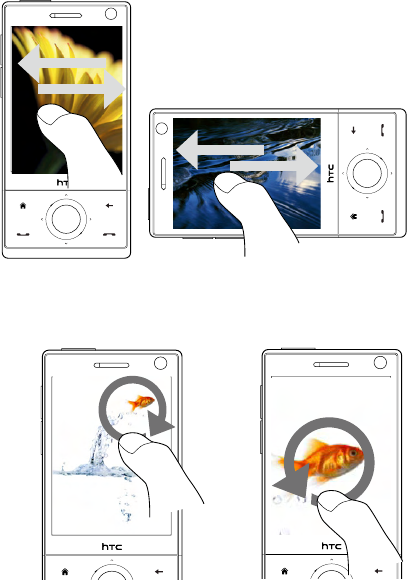
Experiencing Multimedia 183
To view the next or previous image
When viewing images in Portrait or Landscape mode, go to the next image
by swiping your finger across the screen from right to left. Go back to the
previous image by swiping your finger from left to right.
To zoom in or out of an image
While viewing an image, make a full circle motion on the screen with your
finger.
Slide your finger counter-
clockwise to zoom out.
Slide your finger clockwise
on an area to zoom in on
that area.
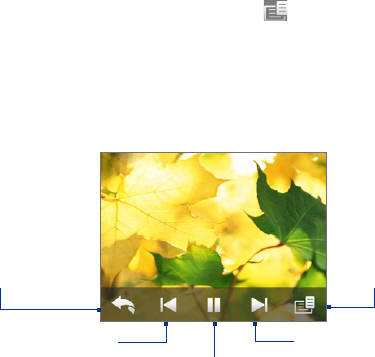
184 Experiencing Multimedia
Tips • When you zoom in on an image, double tap the screen to automatically
zoom out and fit the image to the screen.
• When you zoom in on an image, tap and hold the screen so you can pan
the image.
• You can also zoom in and out of the image by sliding your finger around
the NAVIGATION CONTROL clockwise/counterclockwise.
• When you zoom in on an image, tap the screen to open the on-screen
menu. On the on-screen menu, tap and then select Save Screen
Image to save the image on-screen as a new file.
To view still images as a slideshow
While viewing the slideshow, tap the screen to show playback controls.
Note The screen orientation automatically switches to landscape mode when
viewing a slideshow.
Tap to go back to the
previous image.
Tap to open the slideshow
options where you can
set the transition effect
to use, time per slide, and
orientation of the images.
Tap to return to
the main Album
screen or the
Photos and
Videos tab.
Tap to play or pause the
slideshow playback.
Tap to go to the
next image.
Tip If the images are in your favourite album, you can start the slideshow from
the Photos and Videos tab on the Home screen. On the Photos and Video
tab, tap Slideshow.
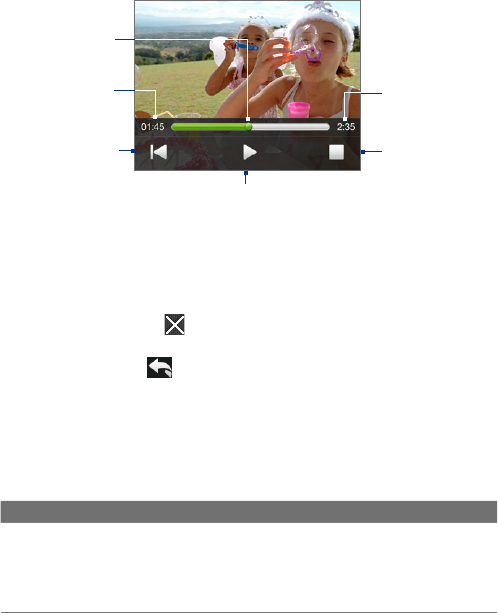
Experiencing Multimedia 185
Play back video
While playing back video, tap the screen to show the playback controls.
Tap to go back to
the beginning of
the video.
Tap to play or pause
video playback.
Tap to stop
video playback.
Drag to go forward
or backward in the
video.
Elapsed time Total duration
Tip If the video is in your favourite album, you can start the video playback from
the Photos and Videos tab on the Home screen. On the Photos and Video
tab, tap Play.
Close Album
Close Album by tapping on the main Album screen. When viewing files
in full screen mode, tap the screen to show the on-screen menu or playback
controls and then tap to go back to the main Album screen.
11.3 Using Windows Media® Player Mobile
Windows Media® Player Mobile plays digital audio and video files that are
stored on your device or on a network, such as on a web site.
Video File Formats Supported File Extensions
Windows Media Video
MPEG4 Simple Profile
H.263
H.264
Motion JPEG
.wmv, .asf
.mp4
.3gp, .3g2
.mp4, .3gp, .3g2, .m4v
.avi
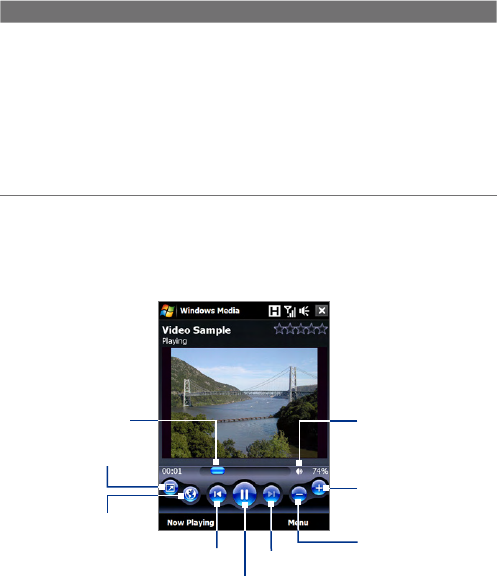
186 Experiencing Multimedia
Audio File Formats Supported File Extensions
Windows Media Audio
WAVE
MP3
MIDI and SP MIDI
AMR Narrow Band
AMR Wide Band
AAC, AAC+, and eAAC+
MPEG4 audio
QCELP
EVRC
.wma
.wav
.mp3
.mid, .midi, .rmi
.amr, .3gp
.awb,.3gp
.aac, .mp4, .m4a, .3gp
.m4a
.qcp, .3g2
.qcp
To open Windows Media® Player Mobile
Tap Start > Programs > Windows Media.
About the controls
Play/Pause
Full screen
Visit WindowsMedia.com
Tap and drag to
jump to any part of
the video or audio
Skip to the beginning of
the current file or to the
previous file
Skip to the next file
Mute/Unmute
Increase volume
Decrease volume
Experiencing Multimedia 187
About the screens and menus
Windows Media® Player Mobile has three primary screens:
• Playback screen. The screen that displays the playback controls (such
as Play, Pause, Next, Previous, and Volume) and the video window.
You can change the appearance of this screen by choosing a different
skin.
• Now Playing screen. The screen that displays the Now Playing
playlist. This special playlist indicates the current file being played and
any files that are “queued up” to play next.
• Library screen. The screen that lets you quickly find your audio files,
video files, and playlists. It contains categories such as My Music, My
Videos, My TV, and My Playlists.
At the bottom of each screen, you can open a Menu. The commands on
this menu vary, depending on which screen you are viewing. For more
information about the commands in these menus, see Help on your device.
Synchronize video and audio files
Use the latest version of Windows Media® Player on your computer to
synchronize digital media files from your computer to your device. This
ensures that protected files and album art (for skins) are copied to your
device correctly.
To synchronize content to your device automatically
1. On your computer, open Windows Media® Player, then connect your
device to your computer.
2. In the Device Setup Wizard, select Yes, search my computer now.
Note If you have previously opened Windows Media® Player and searched
for media on your computer, you will not be prompted to search your
computer in Step 2.
3. On the Device Setup dialog box, enter a name for your device and
click Finish. Windows Media starts synchronizing the music files in the
PC with the device.
4. Click Stop Sync and then on the left panel of Windows Media® Player,
right-click the name of your device and click Set Up Sync.
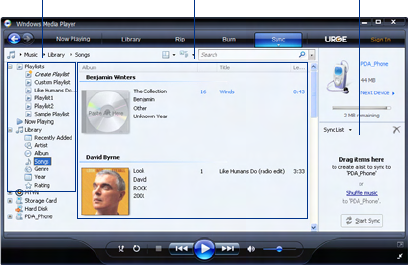
188 Experiencing Multimedia
5. Select the playlist(s) that you want to sync between your computer
and device, then click Add.
Note On the Device Setup dialog box, make sure that the Sync this device
automatically check box is selected.
6. Click Finish.
The files will begin synchronizing to your device. The next time you connect
your device to your computer while Windows Media® Player is running,
synchronization will start automatically.
To synchronize content manually to your device
1. If you have not set up media synchronization between your device
and computer, follow steps 1 to 3 in “To synchronize content to your
device automatically”.
2. Click the Sync tab on the Windows Media® Player of your computer.
Select a Playlist or a Library on the left panel of the Windows Media®
Player.
3. From the Content List, drag the media files that you want to sync to
your device and drop them to the Sync List.
Playlists and Library List Sync ListContent List
4. Click Start Sync to start synchronizing the selected files to your
device.
Experiencing Multimedia 189
Notes • Use Windows Media® Player 11 or higher on your computer to synchronize
media files to your device.
• Audio files copy faster if Windows Media® Player is configured to
automatically set the quality level for audio files copied to your device. For
more information, see the Windows Media® Player Help.
Play media
Use the Library to find and play songs, videos, and playlists that are stored
on your device or internal storage.
To update the Library
1. If you are not on the Library screen, tap Menu > Library.
2. On the Library screen, tap the Library arrow (near the top of the
screen), then tap the media storage that you want use, for example,
internal storage.
3. In most cases, Windows Media® Player Mobile automatically updates
the library. However, you can manually update the library to ensure
that it contains new files that you recently copied to your device or
internal storage. Tap Menu > Update Library to manually update the
library list.
To play video and audio files on your device
1. Select a category (for example, My Music or My Playlists).
2. Tap and hold the item that you want to play (such as a song, album, or
artist name), then tap Play.
Tips • To play a media file that is stored on your device but is not in a library, on
the Library screen, tap Menu > Open File. Tap and hold the item that you
want to play (such as a file or a folder), then tap Play.
• To play a media file from the Internet or a network server, tap Menu >
Library then tap Menu > Open URL.
190 Experiencing Multimedia
Playlists
In Windows Media® Player Mobile, you can create a new playlist by saving
the current Now Playing playlist and giving it a new name.
To save a new playlist
1. If you are not on the Library screen, tap Menu > Library.
2. Tap to select a category (for example, My Music or My Playlists).
3. Select a media file that you want, then tap Menu > Queue Up. This
adds the file to the Now Playing list.
Repeat this step until you have added all desired media files to the
Now Playing list.
Note You cannot select multiple files simultaneously.
4. After adding the media files, tap Menu > Now Playing.
5. On the Now Playing screen, tap Menu > Save Playlist.
6. Enter the playlist name, then tap Done.
7. To play back the playlist you created, tap My Playlists in the Library,
select your playlist, then tap Play.
Troubleshooting
If you encounter a problem while using the Windows Media® Player Mobile,
a number of resources are available to help you troubleshoot the issue.
For more information, see the Troubleshooting Windows Media® Player
Mobile page at the Microsoft web site (http://www.microsoft.com/
windows/windowsmedia/player/windowsmobile/troubleshooting.aspx).
11.4 Using FM Radio
FM Radio allows you to listen to FM radio stations on your device. Since FM
Radio uses the provided stereo wired headset as an antenna, you must plug
in the headset first onto the earphone jack of your device before you open
the program.
To open FM Radio
Tap Start > Programs > FM Radio.
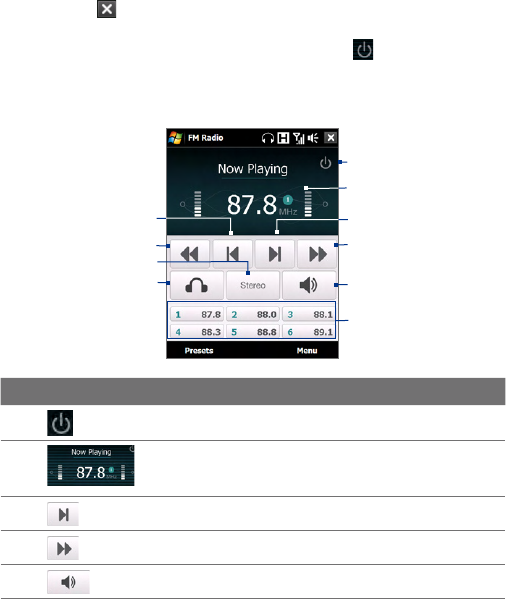
Experiencing Multimedia 191
The first time this program is used, it will automatically scan for available FM
channels in your area, save them as presets, then play the first FM station
found. For information about saving favourite stations as presets, see “Save
presets.“
When you tap on the FM Radio screen, the program continues to run
in the background and allows you to continue listening to the radio while
you use other programs. To turn off the FM radio, tap on the upper right
corner of the FM Radio screen.
FM Radio controls
1
9
8
3
5
2
4
7
6
10
This control Does this
1Turns off FM radio.
2See “Radio display” for details.
3Searches the FM band for the next higher FM channel.
4Increases the radio frequency by 0.1MHz.
5Turns the sound on or off.
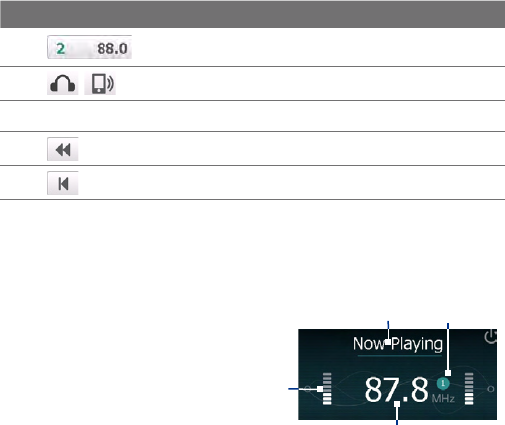
192 Experiencing Multimedia
This control Does this
6Allows you to save up to six favourite FM stations as
presets. Tap a button to tune in to a favourite station.
7 Switches between headset and speaker output.
8Stereo/Mono Allows you to switch between Mono and Stereo modes.
9Decreases the radio frequency by 0.1MHz.
10 Searches the FM band for the next lower FM channel.
Tip Tap Menu to choose more options for FM Radio, such as Scan & Save to
perform a rescan of the FM band for available FM stations and save them as
presets, and more.
Radio display
1Shows the station name when the
RDS (Radio Data System) or RDBS
(Radio Data Broadcast System) signal
is available.
1
3
2
4
2Shows the preset number when you
select a preset FM station.
3Shows the received signal strength.
4Shows the radio frequency.
Device controls used in FM Radio
Navigation
• Press NAVIGATION left/right to search the FM band for the next lower/
higher FM channel. When the search reaches the last station, it cycles
back to the beginning of the FM band.
• Press NAVIGATION up/down to select the previous/next available
preset station.
• Press the ENTER button to toggle mute on and off.

Experiencing Multimedia 193
Volume Control
Press the VOLUME CONTROL on the side of the device to adjust the FM
Radio volume.
Save presets
Presets are favourite FM stations that you can save for easy access. You
can save up to six FM stations to the preset buttons on the main FM Radio
screen, or save up to 20 presets on the Presets screen.
To save FM stations
1. Tune to the desired FM frequency, then tap Presets.
2. On the Presets screen, tap that appears on the desired preset
number where you want to save the FM station.
You can save up to 20 preset radio stations. Radio stations that are
saved on Presets 1 to 6 can be accessed on the main FM Radio screen.
Tip Tap to remove a favourite FM station from the list.
3. When done, tap OK.
To listen to a preset FM station
Do one of the following:
• On the main FM Radio screen, tap the preset button that shows your
favourite station.
• On the Preset screen, select a preset number that shows your
favourite station, then tap Listen.
FM Radio Main Menu
Tap Menu on the FM Radio screen to access options for the FM Radio
program.
Scan & Save Automatically scan radio stations that can be picked
up by the device and save them as presets. Existing presets will be
cleared and replaced with the newly scanned radio stations. You can
have a maximum of 20 preset radio stations.
Stereo Toggles between using Stereo or Mono mode when listening
to an FM radio station.
Mute Toggles between muting and restoring the volume.
•
•
•
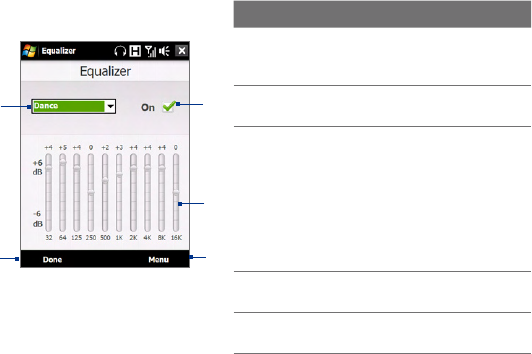
194 Experiencing Multimedia
Output Select whether to use the device Speaker or Wired Headset
to listen to the radio.
Sleep Set how much time must pass before FM Radio goes into sleep
mode. The Sleep option is switched to Off every time you launch FM
Radio.
Exit Select to turn off FM Radio.
11.5 Using Audio Booster
Audio Booster optimizes sound for a better listening experience. It
provides preset moods, such as hip hop, jazz, rock, etc., and several
enhancement presets that suit different types of music.
To access Audio Booster
Tap Start > Programs > Audio Booster.
1
2
3
4
This control Does this
1On Select the check box to
enable or disable the
equalizer.
2Frequency
band
Drag the sliders to adjust
the frequency.
3Menu • Tap Menu > Cancel
to exit Audio Booster
without applying the
modified settings:
• Tap Menu > Save as
Preset or Delete Preset
to save or delete preset
equalizer settings.
4Done Tap to apply the modified
settings.
5Equalizer
presets
Tap to choose the
Equalizer preset to use.
5
•
•
•
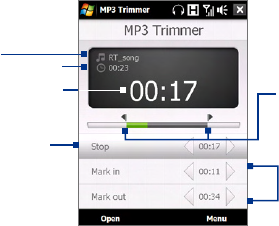
Experiencing Multimedia 195
To use a Equalizer preset
Tap the list box then select a desired preset.
To create a custom equalizer preset
1. Adjust the frequency bands to your desired values by dragging the
equalizer controls. The selected values are indicated on top of the
sliders.
2. Save your equalizer settings as a preset by tapping Menu > Save as
Preset.
3. Enter a preset name and then tap Done. The preset you created will
be added to the list box.
To delete a custom equalizer preset
1. Tap the list box then select the Equalizer preset you want to delete.
2. Tap Menu > Delete Preset.
Note You can only delete custom equalizer presets. Equalizer presets that are pre-
installed cannot be deleted.
11.6 Using MP3 Trimmer
Use MP3 Trimmer to trim MP3 files. You can choose to save it as a new file
or set it as a ring tone.
Play/Stop
Mark in / Mark out points
Mark the part of the music
that will be used as the ring
tone. Drag the left handle to
mark the start time (mark-in
point), then drag the right
handle to mark the end time
(mark-out point).
Mark in / Mark out
For more precise
marking, you can also
tap these controls to
step backward/forward
one step and mark it.
Title Duration
Playback time
196 Experiencing Multimedia
To trim the MP3 file
1. Tap Start > Programs > MP3 Trimmer.
2. Tap Open to find the MP3 file in the device.
3. On the MP3 Trimmer screen, use the stylus to adjust the Mark in
point and Mark out point.
After you set the Mark in point, the song will play back starting from
the Mark in point.
After you set the Mark out point, the song will play back starting from
5 seconds before the Mark out point.
4. Tap Play to play back the trimmed song.
5. Tap Menu and select to whether set the file as the default ring tone,
save the file to the ring tone folder, or save it using another file name.
Tip If you only want to save the song to the ring tone folder for future
use, tap Save to Ring Tone Folder. Later on, you can tap Start >
Settings > Personal tab > Phone to set it as your ring tone.
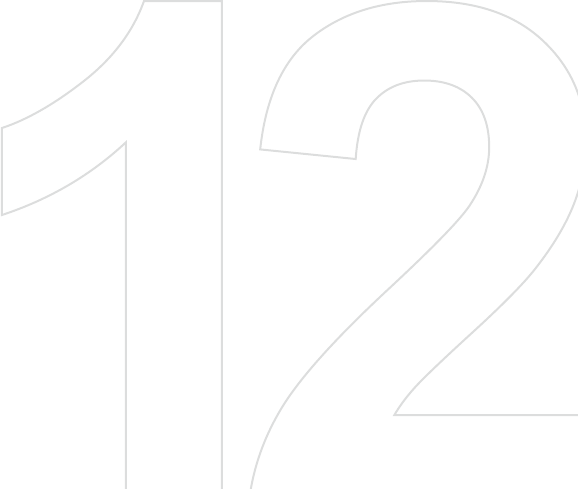
Chapter 12
Programs
12.1 Programs on your Device
12.2 Adding and Removing Programs
12.3 Adobe® Reader® LE
12.4 Calendar
12.5 Contacts
12.6 Comm Manager
12.7 Microsoft® Office Mobile
12.8 Notes
12.9 Java
12.10 SIM Manager
12.11 Spb GPRS Monitor (Available by Country)
12.12 Sprite Backup
12.13 Tasks
12.14 Voice Recorder
12.15 Voice Speed Dial
12.16 ZIP
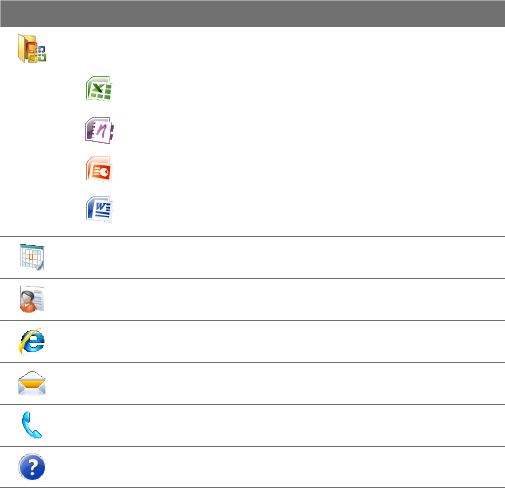
198 Programs
12.1 Programs on your Device
The following are programs you can find on your device or install from the
Applications disc.
Programs in the Start Menu
Icon Description
Office Mobile Use the complete suite of Microsoft® Office applications
for your mobile device.
Excel Mobile Create new workbooks or view and edit Excel
workbooks.
OneNote Mobile Create notes with text, photos, and voice
recordings.
PowerPoint Mobile View PowerPoint slides and presentations.
Word Mobile Create, view, and edit Word documents.
Calendar Keep track of your appointments and create meeting
requests.
Contacts Keep track of your friends and colleagues.
Internet Explorer Mobile Browse web and WAP sites as well as
download new programs and files from the Internet.
Messaging Send and receive e-mail, MMS, and text messages.
Phone Make and receive calls, switch between calls, and set up
conference calling. See Chapter 2 for details.
Help See Help topics for the current screen or program.
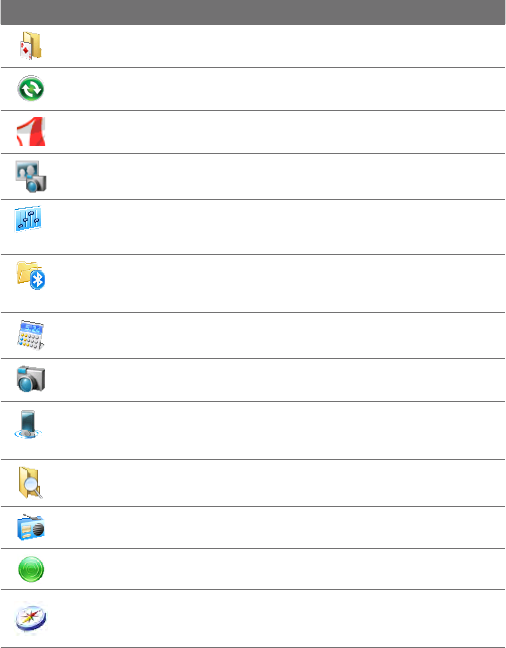
Programs 199
Programs screen
Icon Description
Games Play these pre-installed games: Bubble Breaker, Teeter and
Solitaire.
ActiveSync Synchronize information between your device and a PC or
the Exchange Server. See Chapter 5 and 7 for details.
Adobe Reader LE View PDF (Portable Document Format) files on your
device.
Album View photos and videos that you captured using the device
camera. See Chapter 11 for details.
Audio Booster Enhances your music experience by providing you with
controls for adjusting equalizer, 3D sound, treble, and bass settings. See
Chapter 11 for details.
Bluetooth Explorer Search for other Bluetooth devices that have file
sharing enabled and access their Bluetooth shared folder. See Chapter 9
for details.
Calculator Perform basic arithmetic and calculations, such as addition,
subtraction, multiplication, and division.
Camera Take photos and shoot video clips with accompanying audio.
See Chapter 11 for details.
Comm Manager Manage your device’s connections (including Internet
and Bluetooth), turn the phone on or off, and enable or disable the Direct
Push function.
File Explorer Organize and manage files on your device.
FM Radio Listen to your favourite FM radio stations. See Chapter 11 for
details.
Getting Started View a list of “how to’s” that you can reference to learn
basic features and settings of your device.
Google Maps(Available by Country) View your current location, search
for places of interest and addresses, seek directions, and more. See
Chapter 10 for details.
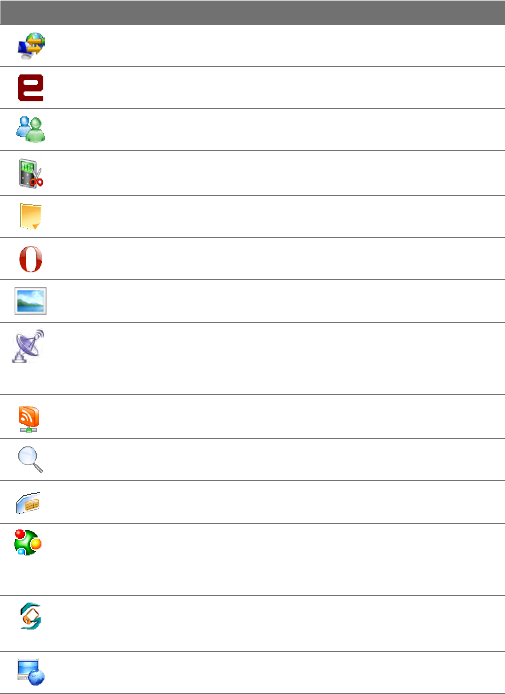
200 Programs
Icon Description
Internet Sharing Connect your notebook computer to the Internet
using your device's data connection. See Chapter 8 for details.
Java Download and install Java applications, such as games and tools,
on your device.
Messenger This is the mobile version of Windows Live™ Messenger. See
Chapter 8 for details.
MP3 Trimmer Trim MP3 files, and choose to save the trimmed music as a
new file or set it as a ring tone. See Chapter 11 for details.
Notes Create handwritten or typed notes, drawings, and voice
recordings.
Opera Mobile This is the mobile version of the Opera browser. See
Chapter 8 for details.
Pictures & Videos View, organize, and sort pictures, animated GIFs, and
video files on your device.
QuickGPS Download satellite data over the Internet via ActiveSync
(if your device is connected to a computer), Wi-Fi or a data connection
to speed up the time for determining your current GPS position. See
Chapter 10 for details.
RSS Hub Download and read the latest web feeds from the Internet. See
Chapter 8 for details.
Search Search contacts, data, and other information on your device.
SIM Manager Manage the contacts that are stored on your SIM card. You
can also use this program to copy SIM contents to Contacts on your device.
Spb GPRS Monitor(Available by Country) Use this program to measure
the amount of data transfers that you have made via the GPRS or GSM
network connection, and calculate network usage costs. You can install
this program from the Applications disc.
Sprite Backup Back up your device’s data and files to a specified folder,
the internal storage, or a computer. You can install this program from the
Applications disc.
Streaming Media Stream live or on-demand video. See Chapter 8 for
details.
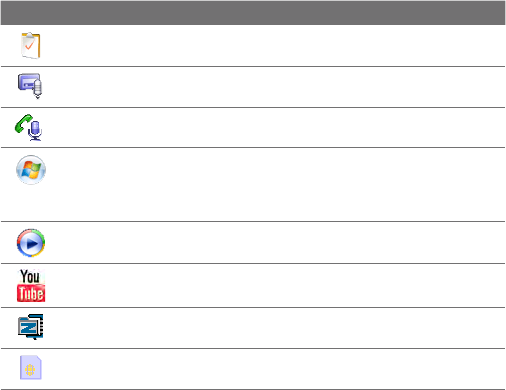
Programs 201
Icon Description
Tasks Keep track of your tasks.
Voice Recorder Record your voice and send it via e-mail, MMS or
beaming. You can also set the recorded voice as your ring tone.
Voice Speed Dial Record voice tags so that you can dial a phone
number or launch programs by speaking a word.
Windows Live Use this mobile version of Windows Live™ to find
information on the web. It also lets you sign into your Windows Live
account so that you can access your Live Mail messages and send/receive
instant messages in Live Messenger. See Chapter 8 for details.
Windows Media Player Mobile Play back audio and video files. See
Chapter 11 for details.
YouTube™ Search for uploaded videos in YouTube and play them on
your device. See Chapter 8 for details.
ZIP Save memory and free up storage space on your device by
compressing files in the conventional ZIP format.
STK (SIM Tool Kit) Service Access information and other services
offered by your wireless service provider.
12.2 Adding and Removing Programs
Additional programs, such as the programs in the Applications disc or
other programs that you purchase, can be installed and uninstalled on your
device. Your device does not allow you to uninstall most of the preinstalled
programs.
Note Before you purchase additional programs for your device, make sure that
they are compatible with your device.
To install a program
1. Download the program to your computer (or insert the CD or disk
that contains the program into your computer).
You may see a single *.exe file, a *.zip file, a Setup.exe file, or several
versions of files for different device types and processors. Be sure to
select only the programs designed for your device.

202 Programs
2. Read any installation instructions or documentation that comes with
the program. Many programs provide special installation instructions.
3. Connect your device to the computer.
4. Double-click the installation setup file.
To uninstall a program
1. Tap Start > Settings > System tab > Remove Programs.
2. In the Programs in storage memory list, select the program you
want to remove, then tap Remove.
12.3 Adobe® Reader® LE
Adobe® Reader® LE is an application for viewing PDF (Portable Document
Format) documents on your device. It supports a subset of the features
found in the PC versions of Adobe Reader.
To open Adobe Reader LE
• Tap Start > Programs > Adobe Reader LE.
To open a PDF file on your device
• Open a PDF file in Adobe Reader LE; or
• Open File Explorer, find the PDF file, then tap the file to open it.
To navigate through a PDF document
You can use the controls in the program and finger gestures to navigate a
PDF document.
• Tap Tools > View > Continuous and then slide your finger up or
down the screen to scroll through the pages in the document.
Tip You can also drag the scroll bars to scroll through the pages.
• Tap to zoom in or to zoom out. After zooming in, slide your
finger on the screen to pan the current page.
• Press NAVIGATION up/down/right/left to move to the desired
direction of the page.
• Tap to return to the previous page; tap to move to the next page.
Tap to jump to the first page; tap to jump to the last page.

Programs 203
• Tap Tools > Go To > Page Number to enter a page number that you
want to view.
To search for text in the document
1. Tap Tools > Find > Text or tap in the toolbar.
2. Type in the text to be searched, then tap Find.
The matched text in the document will be highlighted.
3. To view the next occurrence of the text, tap Tools > Find > Next.
Tips • Adobe Reader LE displays a bookmark pane for the PDF files that contain
bookmarks. Tap the bookmarks to go to a specific section/page within the
file.
• Adobe Reader LE supports password-protected PDF files with up to 128-
bit encryption. When you open a password-protected PDF file, you will be
prompted to enter the password before opening it.
12.4 Calendar
Use Calendar to create appointments, including meetings and other
events. You can also synchronize Calendar appointments between your
device and computer.
To open the Calendar screen
On the TouchFLO 3D Home screen, tap Calendar or a displayed
appointment; or
Tap Start > Calendar.
Create appointments
To schedule an appointment
1. Open the Calendar screen and then tap Menu > New Appointment.
2. Enter a name for the appointment.
3. Do one of the following:
• If it is a special occasion such as a birthday or a whole-day event,
set the All Day option to Yes.
• If there is a time frame for the appointment, set the start and end
dates and times.
•
•
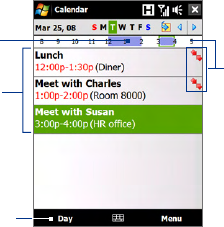
204 Programs
4. Specify the type of category for your appointment, so that it can be
grouped with other related appointments. Tap Categories, then
select a preset category (Business, Holiday, Personal, or Seasonal), or
tap New to create your own category.
5. When finished, tap OK to return to the calendar.
Notes • All-day events do not occupy blocks of time in Calendar; instead, they
appear in banners at the top of the calendar.
• To remove an appointment, tap Menu > Delete Appointment.
Tip To have the time entered automatically in Day view, tap and drag to select a
time slot for the new appointment, and tap Menu > New Appointment.
To set the reminder time for new appointments
By default, Calendar has been set to display a reminder alert when you have
new upcoming appointments. You can change the reminder time.
1. Open the Calendar screen.
2. Tap Menu > Tools > Options > Appointments tab.
3. Make sure the Set reminders for new items check box is selected.
4. Set the time when you want the reminder to alert you.
5. Tap OK to return to the Calendar screen.
View appointments
By default, Calendar displays appointments in Agenda view. You can also
look at your appointments in Day, Week, Month, and Year views.
The highlighted hours
here indicate the time of
your appointments.
Tap to view appointment
details.
Agenda view
Tap to switch views.
The red box and
arrows indicate
that there are
conflicting
appointments.

Programs 205
• To see detailed appointment information in any view, tap the
appointment.
• To view appointments by category, tap Menu > Filter, then select the
desired category.
• To change the default view that Calendar uses to display
appointments, tap Menu > Tools > Options > General tab. Tap the
Start in box, then choose the calendar view.
• When in Month view, you will see the following indicators:
Morning appointment
Afternoon or evening appointment
Both morning and afternoon/evening appointments
All-day event
Send appointments
To send a meeting request
Use Calendar to schedule meetings via e-mail with contacts who use
Outlook or Outlook Mobile.
1. Open the Calendar screen.
2. Schedule a new appointment, or open an existing one and tap Menu
> Edit.
3. Tap Attendees, then tap Add Required Attendee or Add Optional
Attendee and add the contacts whom you want to invite.
Note You can specify if an attendee is required or optional only if your
device is connected to a Microsoft Exchange 2007 server. Otherwise,
all attendees are designated as required. For more information, see
“Managing Meeting Requests” in Chapter 7.
4. When you have finished adding attendees, tap Done.
5. Tap OK to send.
Tip To choose the e-mail account to use for sending meeting requests, tap
Menu > Tools > Options > Appointments tab. Tap the Send meeting
requests via box and choose to send via your Outlook E-mail, POP3/IMAP4
or Windows Live™ account.
206 Programs
Notes • If you’re sending the meeting request using your Outlook E-mail account,
it will be sent to the attendees the next time you synchronize your device
with your computer or Exchange Server.
• When attendees accept your meeting request, the meeting is
automatically added to their schedules. When their response is sent back
to you, your calendar is updated as well.
To send appointment details as a vCalendar
A vCalendar is a standard file format used for exchanging scheduling
and task information. vCalendar files can be exported to Outlook on the
computer.
After selecting the appointment to send in the Calendar screen, tap Menu >
Send as vCalendar to send a vCalendar containing appointment details as
a file attachment in an MMS message. For more information, see “MMS” in
Chapter 6.
12.5 Contacts
Contacts is your address book and information storage for people and
businesses you communicate with. You can add the following types of
contacts to your device:
• Outlook contacts. Contacts that are stored on your device, which
can be created on your device or synchronized with your PC or the
Exchange Server.
• SIM contacts. Contacts that are stored on the SIM card. Only a name
and phone number can be stored for each entry.
• Windows Live™ contacts. Contacts that you communicate with using
Windows Live™ Messenger or MSN.
Note You can only add Windows Live™ contacts after you have set up
Windows Live™ on your device. See “Add Windows Live contacts” in
Chapter 8 for details.
To open the Contacts screen
On the TouchFLO 3D Home screen, slide to the People tab and then
tap All People; or
Tap Start > Contacts.
•
•
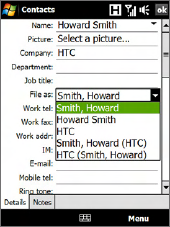
Programs 207
Add new contacts
To add a contact on your device
1. Open the Contacts screen.
2. Tap New, select Outlook Contact, and
enter the contact information.
3. In the File as field, choose how you
want the contact name to appear in the
contact list.
4. To add a photo of the contact, tap Select
a picture, and then select the picture
file or tap Camera to take a photo of the
contact.
5. To assign a ring tone to the contact, tap
the Ring tone field, scroll through the
list of tones, then select a desired tone.
6. When finished, tap OK.
Tips • If a person who is not in your list of contacts called you and you want to
save that person’s phone number, tap and hold the phone number in the
Call History and then tap Save to Contacts from the shortcut menu.
• To save a phone number that is contained in a message, open the
message, tap the underlined phone number, and then tap Menu > Save
to Contacts.
• To edit contact information, tap the contact name and then tap Menu >
Edit.
To add a contact to your SIM card
1. Open the Contacts screen.
2. Tap New, then select SIM Contact.
3. Enter a contact name and phone number.
4. Tap OK.
Tip You can also use the SIM Manager to add and edit contacts on your SIM card.
For more information, see "SIM Manager" in this chapter.
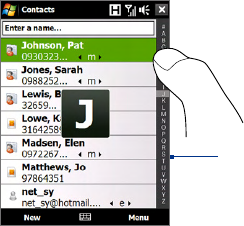
208 Programs
Organize and search contacts
To group similar contacts
For easier management, you can group similar contacts by assigning them
to categories.
1. Create a new Outlook contact or edit an existing Outlook contact.
2. Tap Categories.
3. Select a preset category such as Business or Personal, or tap New to
create your own category.
4. When finished, tap OK.
To find a contact on your device
There are several ways to find a contact when your contact list is long:
Begin entering a contact name in the provided text box until the
contact you want is displayed.
On the Quick Scroll bar on the right of the Contacts screen, scroll to or
tap a letter to go directly to the part of the contacts list where contact
names start with that letter.
Quick Scroll
bar
Note You can disable the Quick Scroll bar by tapping Menu > Options and
selecting the Show alphabetical index check box. This will show the
alphabetical index at the top of the Contacts list.
Filter the list by categories. In the contact list, tap Menu > Filter, then
tap a category you’ve assigned to a contact. To show all contacts
again, select Menu > Filter > All Contacts.
•
•
•
Programs 209
Share contact information
To beam a contact’s details
You can quickly send contact information to another mobile phone or
device through Bluetooth beaming.
1. On the Contacts screen, select a contact.
2. Tap Menu > Send Contact > Beam, then select a device where to
beam the contact to.
Note Before beaming, make sure Bluetooth is turned on and set to visible mode
on your device and the target mobile device. You can also beam contact
information to your computer. See Chapter 9 for details.
To send contact information via text messaging
1. On the Contacts screen, select a contact.
2. Tap Menu > Send Contact > SMS \ MMS.
3. Select the contact information you want to send, then tap Done.
4. In the new text message, enter the mobile phone number of the
recipient, then tap Send.
To send contact information as a vCard
A vCard (virtual business card) is a standard file format used for exchanging
contact information. vCard files can be exported to Outlook on the
computer. From your device, you can send a vCard containing contact
information as file attachment in an MMS message.
1. On the Contacts screen, select a contact.
2. Tap Menu > Send as vCard.
3. A new MMS message is created with the vCard file attached. Enter
the mobile phone number or e-mail address of the recipient, then tap
Send.
For more information, see “MMS” in Chapter 6.
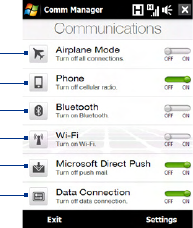
210 Programs
12.6 Comm Manager
Comm Manager is a central location where you can easily turn on and off
the communication features of your device such as the phone, Wi-Fi, data
connection, Bluetooth, and more.
To access the Comm Manager
Do one of the following:
On the TouchFLO 3D Home screen, slide to the Settings tab and then
touch Communications.
Touch Start > Programs > Comm Manager.
Touch Start > Settings > Connections tab > Comm Manager.
1
3
2
4
5
6
1Switch Airplane Mode on or off. Turning on Airplane Mode turns off the
phone, Wi-Fi and Bluetooth functions. For more information, see "To
enable or disable Airplane Mode" in Chapter 2.
2Switch the phone on or off. Tap Settings > Phone to set the ring tone and
other phone settings. See Chapter 13 for details.
3Switch Bluetooth on or off. Tap Settings > Bluetooth to configure
Bluetooth on your device. See Chapter 9 for details.
4Switch Wi-Fi on or off. Tap Settings > Wireless LAN to configure wireless
network connection settings. See Chapter 8 for details.
5Switch between automatically receiving (as items arrive) or manually
retrieving Outlook e-mails. See Chapter 7 for details.
6Disconnect active data connections (GPRS, for example). You cannot
reconnect a data connection in Comm Manager.
•
•
•

Programs 211
12.7 Microsoft® Office Mobile
Microsoft® Office Mobile consists of the following applications:
• Microsoft® Office Excel® Mobile lets you create and edit Excel
workbooks and templates on your device.
• Microsoft® Office OneNote® Mobile lets you create notes with text,
photos, and voice recordings for synchronization later with Microsoft®
Office OneNote® 2007 on your computer.
• Microsoft® Office PowerPoint® Mobile allows you to view (not
create) slide show presentations in *.ppt and *.pps formats.
• Microsoft® Office Word Mobile lets you create and edit documents
and templates in Word Mobile and save them as *.doc, *.rtf, *.txt,
and *.dot files.
To use Microsoft Office Mobile
1. Tap Start > Office Mobile.
2. Tap the Office Mobile application that you want to use.
When working with Word Mobile and Excel Mobile files, you can use the
Navigation Control on your device for zooming:
To zoom in, slide your
finger clockwise around the
Navigation Control.
To zoom out,
slide your finger counterclockwise
around the Navigation Control.
Word Mobile and Excel Mobile do not fully support some features of
Microsoft® Office Word and Microsoft® Office Excel®. To see a complete list
of features that are not supported in Word Mobile and Excel Mobile, see
Help on your device.
Tips • By default, Word Mobile saves documents in .docx format, while Excel
Mobile saves workbooks in .xlsx format. If you want to open these types
of files on a computer that uses Microsoft Office 2000, Office XP, or Office
212 Programs
2003, you need to download and install the File Format Converter in
your computer. You can find this converter at http://www.microsoft.
com/downloads/details.aspx?FamilyId=941B3470-3AE9-4AEE-8F43-C6BB
74CD1466&displaylang=en.
• If you want Word Mobile to save documents in .doc format, tap Menu >
Tools > Options (or Menu > Options when no document is opened),
then change the Default template to Word 97-2003 Document (.doc).
• If you want Excel Mobile to save workbooks in a format that is compatible
with Microsoft Office 2000, Office XP, or Office 2003, tap Menu > Options
(with no workbook opened), then change the Template for new
workbook to Blank 97-2003 Workbook.
12.8 Notes
Using Notes, you can create handwritten and typed notes, record voice
notes, convert handwritten notes to text for easy readability, and more.
To create a note
1. Tap Start > Programs > Notes. In the note list, tap New.
2. Choose an input method and then enter your text.
Tip For more information about input methods and entering text, see
Chapter 4.
3. When finished, tap OK to save and return to the note list.
Notes • To select handwritten text, tap and hold next to the writing. As soon as
dots appear, and before they form a complete circle, quickly drag across
the writing.
• If a letter crosses three ruled lines, it is treated as a drawing rather than
text.
To draw in a note
1. Create or open a note file.
2. Use the stylus to draw on the screen. A selection box then appears
around your drawing.
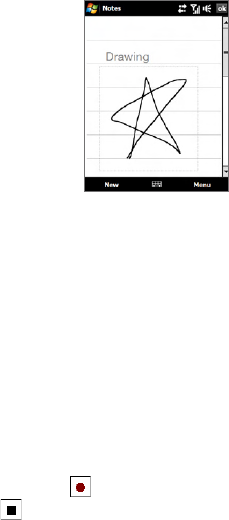
Programs 213
3. Tap OK to save.
Note To select a drawing (for example, to copy or delete it), tap and hold the
drawing briefly. When you lift the stylus, the drawing is selected.
To record a voice note
You can create a stand-alone recording (voice note) or you can add a
recording to a note.
1. Tap Start > Programs > Notes.
2. If you do not see the Recording toolbar, tap Menu > View Recording
Toolbar.
3. Do one of the following:
• To add a recording to a note, create or open a note.
• To create a stand-alone recording, record from the note list.
4. Tap the Record icon ( ) to begin recording your voice. Tap the
Stop icon ( ) when you are finished recording.
Tip
To select the voice recording format, return to the note list and then tap
Menu > Options > Global Input Options link (at the bottom of the Options
screen). On the Input screen, tap the Options tab and choose the desired
format from the Voice recording format list.
12.9 Java
214 Programs
MIDlets are Java applications such as games and tools that can run on
mobile devices, while a MIDlet suite is a collection of one or more MIDlets.
The Java program lets you download, install and manage MIDlets or MIDlet
suites on your device. Your device supports Java 2 Micro Edition, J2ME.
To open the Java program
Tap Start > Programs > Java.
Install and launch MIDlets/MIDlet suites
There are several ways to install a MIDlet/MIDlet suite.
To download and install via Internet Explorer Mobile
1. Tap Menu > Install > Browser to open Internet Explorer Mobile.
2. Locate the MIDlet/MIDlet suite while connected to the Internet.
3. Select the MIDlet/MIDlet suite to download.
4. Information about the MIDlet/MIDlet suite is then displayed. Tap
Continue.
5. Confirm to start downloading.
6. Select <root> or a folder where to install the MIDlet suite to, then tap
OK.
To install from your device
You can copy MIDlets/MIDlet suites from the computer to your device using
the USB sync cable or Bluetooth connection. Copy them to the root folder
or any subfolder on your device.
1. Tap Menu > Install > Local Files. The program then searches for
MIDlets/MIDlet suites on your device and displays them in a list.
2. From the list, tap the MIDlet/MIDlet suite that you want to install.
3. Confirm to start the installation.
4. Select <root> or a folder where to install the MIDlet suite to, then tap OK.
To run a MIDlet/MIDlet suite
Do one of the following:
• After installation of the MIDlet/MIDlet suite is complete, tap Yes.
• On the Java screen, open the folder that contains the MIDlet/MIDlet
suite. Select the MIDlet/MIDlet suite, then tap Launch.
Programs 215
Manage MIDlets/MIDlet suites
You can organize MIDlets/MIDlet suites into folders for easy identification,
renaming, updating, and more. If the device memory is full, uninstall some
MIDlets/MIDlet suites to free up memory space.
To create folders
1. On the Java screen, tap Menu > New Folder.
2. Enter a folder name, then tap Create.
To update a MIDlet/MIDlet suite
Tap and hold a MIDlet/MIDlet suite, then tap Update. Alternatively, you can
tap Menu > Actions > Update.
Java will search for updates for the selected MIDlet/MIDlet suite where it
was installed from before.
To uninstall MIDlets
Before you uninstall a MIDlet, make sure that it is not running.
1. Tap and hold the MIDlet, then tap Uninstall.
2. Tap OK to confirm.
Note To uninstall all MIDlets and folders from the current folder, tap Menu >
Uninstall All.
12.10 SIM Manager
SIM Manager allows you to view the contents of your SIM card, transfer
contacts from your SIM card to your device or vice versa, and make a call to
a SIM contact.
To create a contact on your SIM card
1. Tap Start > Programs > SIM Manager.
2. Tap New and enter a contact name and phone number.
3. Tap Save to save the information on your SIM card.
Tip To change contact information on your SIM card, tap a SIM contact, edit the
information, and then tap Save.
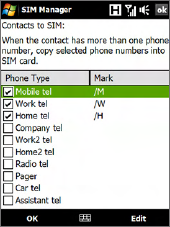
216 Programs
To copy SIM contacts to your device
If you have saved contacts on your SIM card, you can copy them into
Contacts on your device.
1. On the SIM Manager screen, select the desired contact, or select all
SIM contacts by tapping Menu > Select All.
2. Tap Menu > Save to Contacts.
To copy contacts to the SIM card
Only one phone number per contact name can be stored on a SIM card.
When you copy a contact that has several phone numbers to your SIM card,
SIM Manager saves each number under a separate name.
To save each number under a different contact name on the SIM card, SIM
Manager appends an indicator at the end of each name.
By default, /M, /W and /H are appended to indicate mobile, work and home
phone numbers respectively. You can edit this indicator first before you
start copying contacts to your SIM card. Indicators of the other types of
phone numbers are left empty for you to define them.
1. On the SIM Manager screen, tap Menu > Tools > Options.
2. Select the check boxes of the types of phone numbers that you want
to be added to the SIM card.
3. Under the Mark column, you can change
the indicator that will be appended to
the SIM contact names for each phone
number type. To do so, select a phone
type, tap Edit, enter your desired
indicator, then tap Save.
4. After modifying, tap OK.
5. Tap Menu > Contacts to SIM.
6. Select the check boxes of the contact’s
phone numbers that you want to copy to
your SIM card, then tap Save.
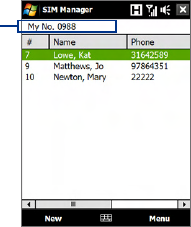
Programs 217
To store your SIM card’s phone number
1. On the SIM Manager
screen, tap Menu >
Tools > List of Own
Numbers.
2. Tap Voice Line 1.
3. Change the name, if
desired, then enter
your mobile phone
number.
4. Tap Save.
When your phone
number is stored
on the SIM card,
it will appear on
the SIM Manager
screen.

218 Programs
12.11 Spb GPRS Monitor (Available by Country)
Using Spb GPRS Monitor, you can monitor how much data you have sent
and received on your device, and check the network usage costs by taking
into account your service plan details. You can also view connection cost
and traffic charts, generate reports of network connection usage, and
export reports to CSV files for use with Microsoft® Office Excel® and Access.
Install GPRS Monitor
The GPRS Monitor program is included in the Applications disc. To install it
onto your device, run the program’s installer on your computer. Follow the
on-screen instructions on your computer and your device to complete the
installation.
The GPRS Monitor icon and pop-up window
You can enable the GPRS Monitor icon to be shown on the title bar. This
icon shows the data connection or dial-up connection speed, data traffic,
and battery status.
To show the GPRS Monitor icon on the title bar
1. Tap Start > Programs > Spb GPRS Monitor.
2. Tap Tools > Options > Icon tab.
3. Select the Show taskbar icon check box.
By default, the GPRS Monitor icon shows three bars that represent the
following status information:
Icon Bar 2: Traffic
(Full bar corresponds to
100%. Each bar is 20%.)
Icon Bar 3: Battery
(Each bar corresponds to
20% of the total charge.)
Icon Bar 1: Speed
(Full bar corresponds
to 19KB/sec.)
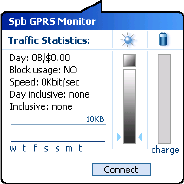
Programs 219
When you tap the GPRS Monitor icon on
the title bar, a pop-up window opens and
shows you detailed statistics about your data
transfers, such as the data size you have just
transferred and its cost, the allowable amount
of data that you can transfer, and more.
Set up monitoring and notification
To select the connection to be monitored
1. On the GPRS Monitor screen, tap Tools > Options > Connection tab.
2. Select the Enable connection monitoring check box.
3. In the Connection list, select the connection you want to monitor.
To enter your service plan details
Service plan details, or tariffs, determine the price that you pay for your
data transfers. The tariff may either be flat rate or time-based, depending on
whether you’re using GPRS or a phone dial-up connection for data transfers.
Contact your wireless service provider to find out about your tariff, and
enter the information in the Tariff tab or the Tariff Details tab on the
Options screen.
Note The calculation of network usage costs is based on the information that you
entered, and is only an estimate. The actual amount billed by your service
provider may differ.
To set up traffic limit notifications
You can set up traffic limit notifications if you want to be notified when a
traffic limit is reached.
1. On the GPRS Monitor screen, tap Tools > Options.
2. Enable the notifications on the Day Warn and Month Warn tabs. You
can specify up to three daily and three monthly limits.
Once traffic reaches one of these limits, you will receive a notification.
220 Programs
View charts and reports
On the GPRS Monitor, you can view network connection cost charts and
traffic charts, as well as generate detailed reports of network connection
usage during a given period of time. These reports can be exported to CSV
files that you can open using Excel, Access, or other similar spreadsheet and
database software applications.
To view charts and generate reports
On the GPRS Monitor screen:
• Tap the Chart tab to view the network connection cost charts and
traffic charts.
• Tap the Report tab to generate reports on network traffic and tariff.
For more information about using Spb GPRS Monitor, see Help on your
device.
12.12 Sprite Backup
Use Sprite Backup to back up data, which includes settings, files, contacts,
and all other information, to the device memory, internal storage or a
computer.
Note If you are sending your device for repair or performing a hard reset, data
from your device will be lost. It is recommended that you use Sprite Backup
to back up your files including settings, contacts and other information to
your computer or internal storage.
To install Sprite Backup
1. Make sure your device is connected to your computer via a USB cable.
2. Insert the Applications disc on your computer’s CD or DVD drive and
start the Sprite Backup installation. You can also download Sprite
Backup from the HTC e-Club website (http://www.htc.com/member/
login.aspx), then double-click the downloaded setup file to start the
installation.
3. Follow the on-screen instructions to install the Sprite Backup PC
Manager to your computer and the Sprite Backup program onto your
device.
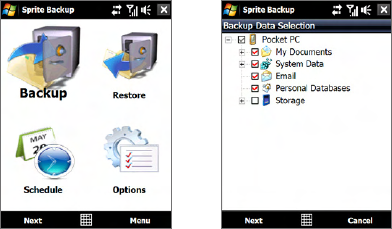
Programs 221
To open Sprite Backup
• On your device, tap Start > Programs > Sprite Backup.
Before you start to back up or restore files, please check the following:
Make sure that the device storage memory has at least 15MB of free
space. To check, tap Start > Settings > System tab > Memory > Main
tab.
Make sure that the internal storage has at least 100MB of free space.
To check, tap Start > Settings > System tab > Memory > Storage
Card tab.
To back up data
1. To back up data remotely to a computer, enable the PC backup
feature first. See “To enable remote backup to a computer” for
instructions.
2. On the Sprite Backup main screen, tap Backup.
3. On the Backup Data Selection screen, you will see a tree view of the
data and files on your device. Tap “+” on the left of an item to view its
sub-items. Use the check boxes to select or exclude items for backup.
Main screen Backup Data Selection screen
Notes It is recommended that you do not back up the File System of your device
as this may cause restoration problems. To not back up the File System,
expand the System Data folder by tapping “+” on its left side and then
clearing the File System checkbox.
•
•
222 Programs
When File System is not backed up, you will need to reinstall all third
party software to your device after you do a hard reset and restored your
files.
4. After selecting data items, tap Next. The Save As screen then appears.
5. Enter a file name for the backup file.
6. In Location, choose whether to save the backup file to \Internal
Storage, \My Documents on the device memory, or to a PC.
Tip When backing up to the internal storage or to \My Documents on the
device memory, you can also choose a specific folder where to save the
backup file.
7. Tap Next.
8. On the Device Reset Required screen, tap Next to start the backup.
Note Do not start and use any programs on your device until the backup process is
completed.
To restore data
1. On the Sprite Backup main screen, tap Restore. Sprite Backup then
searches for all available backup files from the device memory and
internal storage and then displays them on the Open File screen.
Tip To search for backup files created on your computer, connect your
device to your computer and run Sprite Backup PC Manager on your
computer. In Sprite Backup’s Open File screen on your device, set
Location to PC.
2. Select the backup file you want to restore and then tap Next.
3. In the tree view, select the items you want to be restored to your
device and then tap Next.
Note If your phone has SIM PIN lock enabled, a screen will appear asking you
to set up Sprite Backup SIM Unlock feature. It is recommeded that you
set up this feature to avoid file restoration errors. To set up, tap Setup
Phone SIM Lock.
4. On the Device Reset Required screen, tap Next to begin restoring
data.
Note Sprite Backup soft resets your device first before it begins the backup or
restoration process. It soft resets again after the operation is completed.
Programs 223
To enable remote backup to a computer
1. On the Sprite Backup main screen, tap Options > Networking > PC.
2. Select the Enable PC Backup check box and choose whether to do
the remote backup to your computer via ActiveSync or network.
For more information about using Sprite Backup, see the Sprite Backup
Help or download the Sprite Backup User manual from http://www.
spritesoftware.com/.
12.13 Tasks
Use Tasks to keep track of things you need to do. A task can occur once or
repeatedly (recurring).
Your tasks are displayed in a task list. Overdue tasks are displayed in red. A
reminder will be displayed when you have new tasks to be completed.
To create a task
1. Tap Start > Programs > Tasks.
2. Tap Menu > New Task, enter a subject for the task, and fill in
information such as start and due dates, priority, and so on.
3. Specify the type of category for your task, so that it can be grouped
with other related tasks. Tap Categories, then select a preset category
(Business, Holiday, Personal, or Seasonal), or tap New to create your
own category.
4. When finished, tap OK.
To change the priority of a task
Before you can sort tasks by priority, you need to specify a priority level for
each task.
1. Tap Start > Programs > Tasks.
2. Tap the task you want to change the priority for.
3. Tap Edit, and tap a priority level in the Priority box.
4. Tap OK to return to the task list.
Note All new tasks are assigned a Normal priority by default.
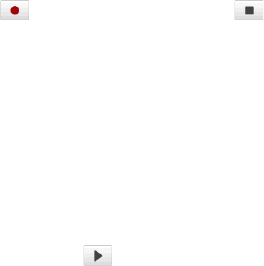
224 Programs
To show start and due dates in the task list
1. Tap Start > Programs > Tasks.
2. Tap Menu > Options.
3. Select the Show start and due dates check box, then tap OK.
To send task information as a vCalendar
After selecting the task to send in the Task screen, tap Menu > Send as
vCalendar to send a vCalendar containing task details as a file attachment
in an MMS message. For more information, see “MMS” in Chapter 6.
12.14 Voice Recorder
Voice Recorder lets you record your voice and quickly send it as an MMS or
e-mail attachment, beam it via Bluetooth, or set the recorded voice as your
ring tone.
Note
Voice Recorder saves voice recordings in AMR-NB (Adaptive Multi-Rate
Narrowband) format only. This is a common speech audio format used in
mobile devices.
To record your voice
1. Tap Start > Programs > Voice Recorder.
2. Hold the device’s microphone close to your mouth.
3. Touch Record or to start recording. Tap Stop or to end the
recording.
To select or create a folder where to save voice recordings
By default, all recordings are saved in the My Voices folder of the internal
storage. You can choose another folder or create a new folder to save your
voice recordings.
1. Tap the arrow beside the folder name on the top-left of the screen.
2. In the menu that opens, choose an existing folder or touch Add/
Delete to create a new folder.
To play back a voice recording
On the Voice Recorder screen, touch a voice recording, or navigate to a
voice recording and then tap Play ( ).

Programs 225
Tip If you need to adjust the sound volume, touch any of the status icons on the
title bar and then touch the Volume icon ( ) to open the System Volume
screen where you can adjust the volume.
To send a voice recording through MMS
Select a voice recording, then tap Menu > Send via MMS. A new MMS
message is then created with the voice recording automatically inserted as
an audio clip.
See “MMS” in Chapter 6 to learn how to compose and send MMS messages.
To send a voice recording via e-mail
Select a voice recording, tap Menu > Send, and then select an e-mail
account. This creates a new e-mail message with the voice recording
inserted as a file attachment.
See “Using E-mail” in Chapter 6 to learn how to send e-mails.
To beam a voice recording via Bluetooth
1. Select the voice recording you want to beam, then tap Menu > Beam
File.
Tip To select multiple recordings, tap and drag over the desired recordings
or tap Menu > Select All.
2. Tap the device you want to send the voice recording to.
3. On the other device, accept the file transfer to receive the file.
To set a voice recording as ring tone
Select the voice recording, then tap Menu > Set as Ringtone.
To rename or move a recording
1. Select the voice recording, then tap Menu > Rename/Move.
Tip To select multiple recordings, tap and drag over the desired recordings
or tap Menu > Select All. Note that you can move multiple files, but you
cannot rename multiple files simultaneously.
2. In Name, enter the new voice recording name.
3. To move the voice recording, select the new destination Folder and
Location.
4. Tap OK.
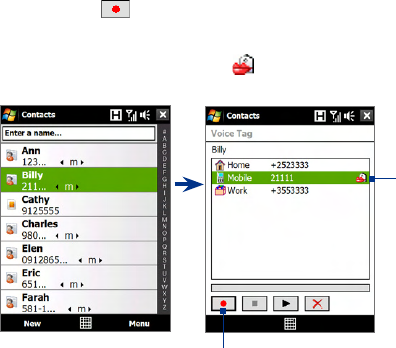
226 Programs
12.15 Voice Speed Dial
You can record voice tags so that you can dial a phone number or launch
programs simply by speaking a word.
To create a voice tag for a phone number
1. On the TouchFLO 3D Home screen, slide to the People tab and then
touch All People to open the Contacts screen.
Tip You can also touch Start > Contacts to open the Contacts screen.
2. Do one of the following:
• Scroll to the desired contact, then touch Menu > Add Voice Tag.
• Touch the desired contact to open the contact card and then
touch Menu > Add Voice Tag.
• Use the stylus to tap and hold the desired contact, then tap Add
Voice Tag.
3. Select the phone number that you want to create a voice tag for, then
touch Record ( ).
Tip To ensure voice recognition accuracy, record your voice in a quiet place.
4. When completed, a Voice Tag icon is displayed on the right of the
item.
Select the
desired
phone
number.
Touch the Record icon to start recording.

Programs 227
To create a voice tag for a program
Touch Start > Settings > Personal tab > Voice Speed Dial > Application
tab.
The Application tab displays a list of all installed programs on your device.
The procedure for creating a voice tag for a program is the same as the
procedure for creating a voice tag for a phone number.
To make a call or launch programs using a voice tag
1. Touch Start > Programs > Voice Speed Dial.
2. After the beep, say the recorded voice tag that you have assigned
to the phone number you want to call or the program you want to
launch. The system will repeat the voice tag, then dial out or launch
the program automatically.
Note If the system cannot recognize your voice tag, move to a quiet place, then try
again while speaking clearly.
To view and test the voice tags you have created
1. Touch Start > Settings > Personal tab > Voice Speed Dial.
2. The Voice Tag tab displays a list that contains all the voice tags you
have created. Select an item in the list, then do one of the following.
• Touch the Record button ( ) to rebuild the voice tag.
• Touch the Play button ( ) to play the voice tag.
• Touch the Delete button ( ) to delete the voice tag.
12.16 ZIP
The ZIP program increases the storage capacity of your device by allowing
you to compress files in the conventional ZIP format. It also allows you to
extract files from a zip file.
To start ZIP on your device
Tap Start > Programs > ZIP.
Each time you start ZIP, it searches for files that have the .zip file extension,
and displays these files on the Archive List screen.
228 Programs
To open a ZIP file and extract files
1. Touch a zip file to open it, or navigate to a zip file and then touch File
> Open Archive.
Note You cannot select multiple ZIP files.
2. From the zip file, select files by doing one of the following:
• Touch a file to select it.
• To select several files, touch Menu > Action and make sure Multi-
Select Mode is selected. Select files by touching each file. (Touch
a selected file to deselect it).
• To select all files, touch Menu > Action > Select All.
3. Touch Menu > Action > Extract.
4. Choose a folder where the files will be extracted to, then touch
Extract.
5. Touch Menu > File > Close Archive to close the zip file.
To create a new zip archive
1. Touch File > New Archive.
2. On the Save As screen, enter the zip file name and choose a folder
where you want to save it. You can also choose whether to save the
zip file on the device’s main memory or internal storage.
3. Touch Save.
4. Touch Menu > Action > Add.
5. Navigate to the folder that contains the files you want to archive.
6. Select files to add by doing one of the following:
• Touch a file to select it.
• To select several consecutive files, drag over the files.
• To select several non-contiguous files, use the stylus to tap and
hold on the screen and then select Multi-Select Mode. Select files
by tapping each file. (Tap a selected file to deselect it).
• To select all files, use the stylus to tap and hold on the screen and
then tap Select All.
7. Touch Add.
8. Touch Menu > File > Close Archive to save and close the zip file.
230 Managing Your Device
13.1 Copying and Managing Files
You can copy files between your device and computer, or copy files to the
internal storage of your device. You can also efficiently manage your files
and folders using File Explorer.
To copy files using Windows Mobile Device Center or ActiveSync
1. Connect your device to the computer.
2. Click File Management > Browse the contents of your device in
Windows Mobile Device Center on your computer, or click Explore in
ActiveSync on your computer. This opens Windows Explorer on your
computer and displays the contents of your device.
3. To copy a file from your device to your computer:
a. Browse the contents of your device, right-click the file you want to
copy, then click Copy.
b. Right-click a folder on your computer, then click Paste.
4. To copy a file from your computer to your device:
a. Browse the folders on your computer, right-click the file you want
to copy, then click Copy.
b. Right-click a folder on your device, then click Paste.
To manage files on your device using File Explorer
File Explorer lets you browse and manage the contents of your device. The
root folder on the device is named My Device, and contains the following
folders: My Documents, Program Files, Windows, and more.
1. Tap Start > Programs > File Explorer.
2. Tap a folder or file to open it.
3. To return to an upper level folder, tap Up and select the folder.
4. To quickly delete, rename, or copy a file, tap and hold the file, then
choose the desired operation on the shortcut menu. To copy or delete
multiple files, tap and drag over the desired files to select, tap and
hold the selection, then choose the desired operation on the shortcut
menu.
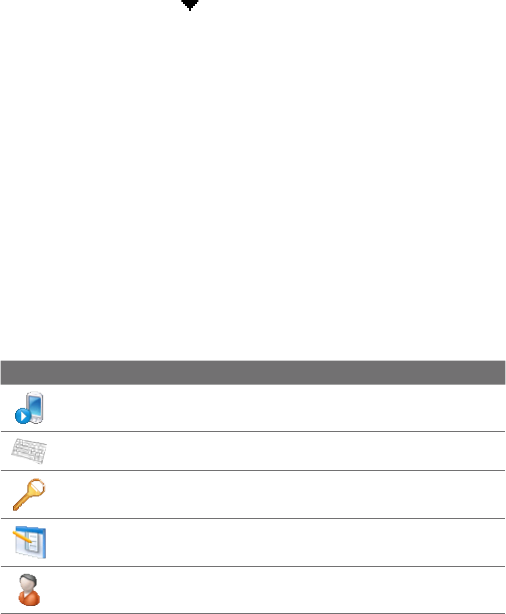
Managing Your Device 231
To copy files to the internal storage
1. Tap Start > Programs > File Explorer and navigate to the
appropriate folder.
2. Tap and hold the file you want to copy, then tap Copy.
3. Tap the down arrow ( ), then tap Internal Storage in the list.
4. Tap and hold an empty area on the screen and then select Paste on
the menu.
Tip You can configure programs such as Word Mobile and Excel Mobile to
directly save edited files onto the internal storage. In the program's file list,
tap Menu > Options, then select the Internal Storage in the Save to box.
To format the internal storage
To learn how to format the internal storage, see “Clear Storage” in this
chapter.
13.2 Settings on your Device
You can adjust the device settings to suit the way you work. To see all
available settings, slide to the Settings tab on the Home screen and tap All
Settings.
Personal tab
Icon Description
Buttons Assign a program or function to a hardware button.
Input Set options for each of the input methods.
Lock Set a password for your device.
Menus Set which programs will appear in the Start menu.
Owner Information Enter your personal information on your device.
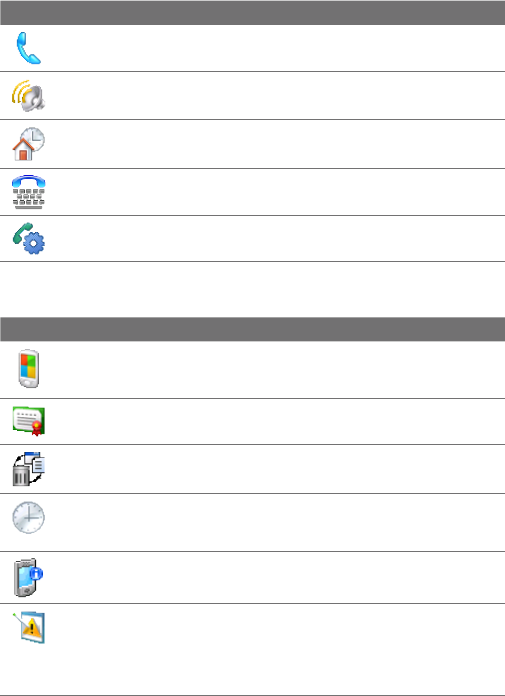
232 Managing Your Device
Icon Description
Phone Customize phone settings such as ring tone, set a PIN number for
your SIM card, and more.
Sounds & Notifications Enable sounds for events, notifications, and
more, and set the type of notification for different events.
Today Customize the appearance and the information to be displayed
on the Home screen.
TTY Enable TTY (Teletypewriter) support for your device.
Voice Speed Dial Create voice tags for voice dialing contacts and SIM
contacts as well as for launching programs.
System tab
Icon Description
About This is where you can see basic information such as the Windows
Mobile® version and type of processor used on your device. You can also
specify a name for your device.
Certificates See information about certificates that are installed on your
device.
Clear Storage Reset your device to factory default settings and/or
format the internal storage.
Clock & Alarms Set the device clock to the date and time of your locale
or to a visiting time zone when you’re traveling. Alarms can also be set at
specified days and times of a week.
Device Information See information about the firmware version,
hardware, identity, and the duration of calls made on your device.
Error Reporting Enable or disable the device's error reporting function.
When this function is enabled and a program error occurs, technical data
about the state of the program and your computer will be logged in a
text file and delivered to Microsoft's technical support if you choose to
send it.
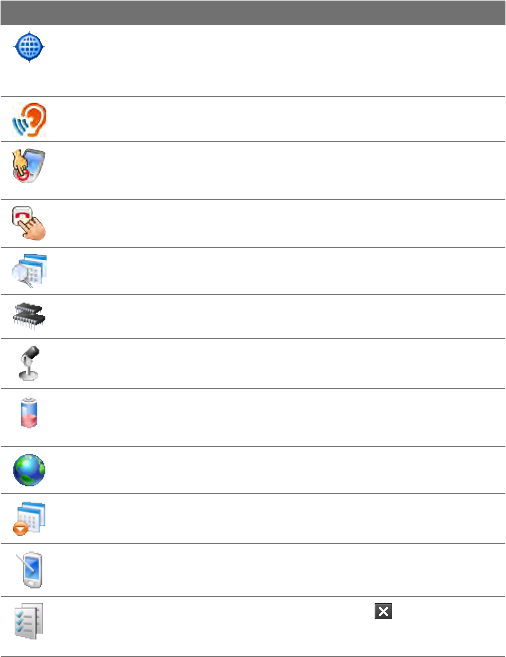
Managing Your Device 233
Icon Description
External GPS Set the appropriate GPS communication ports, if required.
You may need to do this when there are programs on your device that
access GPS data or you have connected a GPS receiver to your device.
See Help for details.
Hearing Aid Compliance When using a hearing aid, turn on this feature
to reduce interference between the device and hearing aid during a call.
Key Lock Lock the buttons on your device except for the POWER button
when the device is in Sleep mode. This ensures you will not switch the
device on by accident and consume unnecessary power.
Long Press End Key Choose the desired function to be executed (for
instance, lock the device) when pressing and holding the END key.
Managed Programs Displays the programs that were installed on your
device using System Center Mobile Device Manager.
Memory Check the device memory allocation status and internal
storage information. You can also stop currently running programs.
Microphone AGC Adjust the volume of your voice automatically when
you are recording.
Power Check the remaining battery power. You can also set the
brightness of the backlight and timeout for turning off the display
(switching device to Sleep mode) to conserve battery power.
Regional Settings Set the regional configuration to use, including the
format for displaying numbers, currency, date, and time on your device.
Remove Programs Remove programs that you installed on your device.
Screen Re-calibrate the screen, apply ClearType, and change the screen
text size.
Task Manager Stop running programs and set the ( ) button to end
programs immediately when you tap the button. For more information,
see "Using Task Manager" in this chapter.
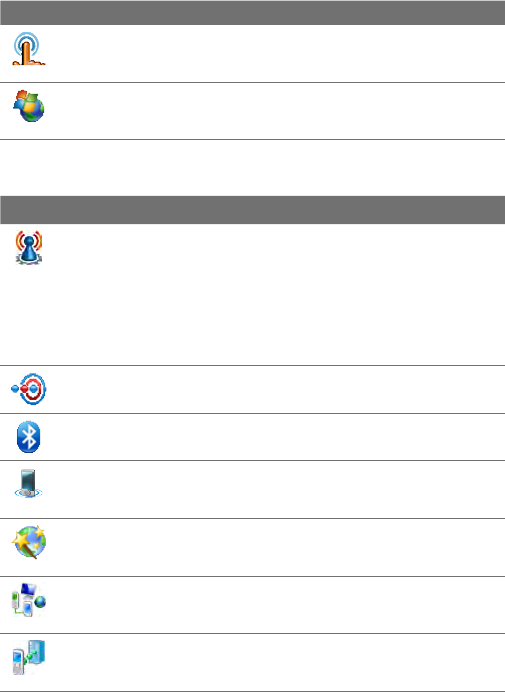
234 Managing Your Device
Icon Description
TouchFLO You can enable or mute the finger scrolling and panning
sound. You can also enable or disable the large Start menu, and choose
to show or hide the System Status screen when title bar icons are tapped.
Windows Update Link to Microsoft's web site and update Windows
Mobile® on your device with the latest security patches or fixes, if they
are available.
Connections tab
Icon Description
Advanced Network Turn on/off HSDPA, set the line type to use
when making circuit switch data (CSD) connection, and set the GPRS
authentication method. HSDPA is a 3.5G digital data service that provides
high-speed downstream data rates. In order for your device to attain the
high connection speed of HSDPA, your wireless service provider must
support this feature and you must be within the coverage area of your
service provider’s HSDPA network. Your device supports up to 7.2 Mbps
download speeds.
Beam Set your device to receive incoming Bluetooth beams.
Bluetooth Turn Bluetooth on, set your device to visible mode, and scan
for other Bluetooth devices.
Comm Manager Manage your device’s connections (including GPRS/3G
and Bluetooth), turn the phone on or off, and enable or disable the Direct
Push function.
Connection Setup Configure your device’s data connections, such
as GPRS, WAP, and MMS, based on the detected or selected network
operator. See “Using Connection Setup” in this chapter for details.
Connections Set up one or more types of modem connections for your
device, such as phone dial-up, GPRS, and more, so that your device can
connect to the Internet or a private local network.
Domain Enroll Enroll your device in your company’s domain to let
System Center Mobile Device Manager to manage the device. Please ask
your Server Administrator for more details.
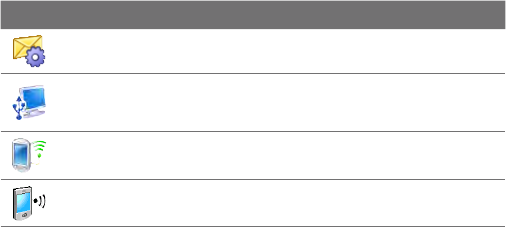
Managing Your Device 235
Icon Description
SMS Service Enables sending of SMS text messages via a data
connection, such as GPRS or a circuit-switched connection.
USB to PC Set the type of USB connection to your PC. Select the
ActiveSync option for synchronising data, or use Disk Drive mode for
transferring files.
Wi-Fi Scan for available wireless networks.
Wireless LAN See information about the active wireless network, and
customize Wi-Fi settings.
13.3 Changing Basic Settings
Date and time
To set the date and time
1. On the Home screen Home tab, tap the time display and then tap the
Time tab.
Tip Tap the More tab and select the Display the clock on the title bar in
all programs option to show the clock on all screens.
2. Select the correct time zone and change the date or time.
Note During synchronization, the time on your device is updated with the time on
your computer.
To set the date and time for a different location
If you visit or communicate with someone in a particular time zone often,
you can select it as your visiting time zone.
1. On the Home screen Home tab, tap the time display and then tap the
Time tab.
2. Tap Visiting.
3. Select the correct time zone and change the date or time.
236 Managing Your Device
Regional settings
The style in which numbers, currency, dates, and times are displayed is
specified in regional settings.
1. On the Home screen, slide to the Settings tab and then tap All
Settings.
2. On the System tab, tap Regional Settings > Region tab and then
select your region from the list.
Note This does not change the language of your device’s operating system.
The region you select determines which options will be available on
the other tabs.
3. To customize regional settings further, tap the appropriate tabs and
set the desired options.
Display settings
To adjust the screen brightness
1. On the Home screen, slide to the Settings tab and then tap All
Settings.
2. On the System tab, tap Power > Backlight tab.
3. Adjust the brightness by dragging the slider under On battery power
and On external power.
To set the backlight to dim after a time delay
1. On the Home screen, slide to the Settings tab and then tap All
Settings.
2. On the System tab, tap Power > Advanced tab.
3. In On battery power and On external power, select the Turn off
backlight if device is not used for check box, then specify the time
delay.
To increase or decrease the size of text on the screen
1. On the Home screen, slide to the Settings tab and then tap All
Settings.
2. On the System tab, tap Screen > Text Size tab.
3. Move the slider to increase or decrease the text size.
Managing Your Device 237
Device name
The device name is used to identify your device in the following situations:
• Synchronizing with a computer
• Connecting to a network
• Restoring information from a backup
Note If you synchronize multiple devices with the same computer, each device
must have a unique name.
To change the device name
1. On the Home screen, slide to the Settings tab and then tap All
Settings.
2. On the System tab, tap About > Device ID tab.
3. Enter the device name.
Notes • The device name must begin with a letter, consist of letters from A to
Z, numbers from 0 to 9, and cannot contain spaces. Use the underscore
character to separate words.
• If you enroll your device to your company’s domain, the device name will
be changed to be the same as the one used to enroll the device.
Ringer settings
To change the ring type and ring tone
1. On the Home screen, slide to the Settings tab and then tap Sound.
2. Scroll down and then tap Ring Type. Select the Ring Type you want to
use and then tap Done.
3. Tap Ringtone and then select the ringtone you want to use.
4. Tap Done.
Tips • You can use *.wav, *.mid, *.mp3, *.wma, or other types of sound files
that you downloaded from the Internet or copied from your computer
as ring tones. For a complete list of supported audio file formats for ring
tones, see "Specifications" in the Appendix.
• To use your sound files as ring tones, copy them first to the /My
Documents/My Ringtones folder on your device, then select the sound
from the Ring tone list of your device. For more information about
copying files, see “Copying and Managing Files” in this chapter.

238 Managing Your Device
Alarms and notifications
To set an alarm
1. On the Home screen Home tab, tap the time display and then tap the
Alarms tab.
2. Tap <Description> and enter a name for the alarm.
3. Tap the day of the week for the alarm. Select multiple days by tapping
each desired day. Tap again to deselect the day.
4. Tap the time to open a clock and set the time for the alarm.
Tip You can drag the hour and minute hands of the clock to set the time.
5. Tap the alarm icon ( ) to specify the type of alarm you want. You
can choose a flashing light, a single sound, a repeating sound, or
vibration.
6. If you choose to play a sound, tap the list next to the Play sound
check box and tap the sound you want.
To choose how to be notified about events or actions
1. On the Home screen, slide to the Settings tab and then tap Sound >
Advanced.
2. On the Sounds tab, choose how you want to be notified by selecting
the appropriate check boxes.
3. On the Notifications tab, in Event, tap an event name and choose
how you want to be notified by selecting the appropriate check
boxes. You can choose from several options, such as a special sound, a
message, or a flashing light.
Tip Turning off sounds and flashing light notifications helps conserve
battery power.
Phone services
Your device can directly link to the mobile phone network, and enable
you to access and change the settings of various phone services for your
device. Phone services may include Call Forwarding, Call Waiting, Voicemail,
and more. Contact your wireless service provider to find out about the
availability of phone services for your device.
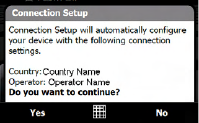
Managing Your Device 239
To access and change settings of phone services
1. On the Home screen, slide to the Settings tab and then tap All
Settings.
2. On the Personal tab, tap Phone > Services tab.
3. Select the service you want to use, then tap Get Settings.
4. Choose your desired options, then tap OK.
For more information about customizing settings of phone services, see
Help on your device.
13.4 Using Connection Setup
Connection Setup configures your device’s data connections, such as
GPRS, WAP, and MMS, for you so that you do not need to enter the settings
manually onto your device. All you need to do is to select your network
operator, then Connection Setup does all the configuration for you.
To automatically configure the device’s data connections
The first time you power on your device, or
when you insert a new SIM card and then
power on your device, Connection Setup
will display a notification message to inform
you that it will automatically configure your
device’s connection settings.
1. Tap Yes on the notification message.
Note If your SIM card supports multiple network operator profiles, the next
message that appears will display network profile choices. Select the
profile you want to use and tap OK.
2. When prompted to automatically configure your device to the proper
network settings, tap Yes.
Connection Setup configures your device’s data connection settings.
3. After the Connection Setup completes the configuration, tap Restart.

240 Managing Your Device
To manually select the network operator to use for data connections
You can also manually select your network operator from Connection
Setup’s settings screen. Connection Setup will then reconfigure your
device’s data connections settings based on the operator that you selected.
1. On the Home screen, slide to the Settings tab and then tap All
Settings.
2. On the Connections tab, tap Connection Setup.
3. Select the network Country and Operator you want to use, then tap OK.
Note If you choose a Country and/or Operator that is different from the
installed SIM card network operator, you may not be able to access
network services.
4. When prompted to confirm whether you want to configure the data
connection settings based on the selected network, tap Yes.
Connection Setup configures the data connection settings.
5. After the Connection Setup completes the configuration, tap Restart.
13.5 Using Task Manager
Task Manager lets you view and stop running programs, configure the
button, and enable the Quick Menu on the Home screen.
To open Task Manager
• Tap the Quick Menu button on the top right corner of the Home
screen to open the Quick Menu, then tap .
• On the Home screen, slide to the Settings tab and then tap All
Settings. On the System tab, tap Task Manager.
To switch back to a running program
• Tap the program name in the Quick Menu.
• On the Task Manager screen, tap and hold the program name on the
Running tab, then tap Activate.

Managing Your Device 241
To configure the Exit ( ) button
You can configure the Exit button to shut down running programs when
the button is tapped, or to just temporarily close the program screen but
keep the program running.
1. On the Task Manager screen, tap the Button tab.
2. Select the Enable the “X” button to end running programs check
box.
Note When the Enable the “X” button to end running programs check box
is not selected, tapping the Exit button will only close a program screen.
The program is not ended and continues to run in the background.
3. Choose the action for shutting down programs (by tapping the
button, or by tapping and holding the button).
4. Tap OK.
To close running programs from the Task Manager
1. On the Task Manager screen, tap the Running tab.
2. Do one of the following:
• Select the check box of the programs that you want to close, then
tap Stop Selected.
• Tap Stop All to close all programs in the list.
• Tap Menu > Stop All but Selected to close all programs except
those which check boxes are selected.
Tip You can also close running programs from the Quick Menu on the Home
screen. See “Quick Menu” in Chapter 1 for details.
To add a running program to the exclusive list
If you add a running program to the Exclusive Programs List, it will not be
closed when you tap Stop Selected or Stop All and will not be listed in the
Quick Menu on the Home Screen.
1. On the Task Manager screen, tap the Running tab.
2. Tap and hold the program name, then tap Add Exclusive.
Tip To remove a program from the exclusive list, tap the Exclusive tab, select the
check box of the program, then tap Remove.
242 Managing Your Device
To set the sorting preference and program icon size in the Quick Menu
1. On the Task Manager screen, tap the Others tab.
2. In Sort programs in Quick Menu by, choose whether to sort
according to Program name or Memory usage. The list will be sorted
in ascending order.
3. In Program icon size in Quick Menu, choose whether to use Small
size or Large size.
13.6 Protecting Your Device
Protect your SIM card with a PIN
You can protect your SIM card from unauthorized use by assigning a PIN
(personal identification number). The default SIM card PIN is provided by
your wireless service provider.
To enable the SIM card PIN
1. On the Home screen, slide to the Settings tab and then tap All
Settings.
2. On the Personal tab, tap Phone > PIN tab.
3. Select the Require PIN when phone is used check box.
4. Enter the PIN number and then tap OK. To change the PIN at any time,
tap Change PIN.
Tip Emergency calls can be placed at any time, without requiring a PIN.
Protect your device with a password
You can help keep your data more secure by requiring a password every
time the device is turned on.
To set a device password
1. On the Home screen, slide to the Settings tab and then tap All
Settings.
2. On the Personal tab, tap Lock.
3. Select the Prompt if device unused for check box, then specify the
idle time before the device requires a password.
Managing Your Device 243
4. In the Password type box, select the type of password you would like
to use.
Tip If your device is configured to connect to a network, use an
alphanumeric password for increased security.
5. Enter the password in both the Password and Confirm boxes.
6. Tap OK. The next time the device is turned on, you will be prompted
to enter your password.
Notes • To ensure that you can always make emergency calls, do not begin your
password with the digits of your local emergency number.
• If you entered a hint, the hint will be displayed after the wrong password
is entered five times.
• Each time a wrong password is entered, the device response time gets
longer until the device appears to be not responding.
• If you forget your password, you can hard reset or clear the device
memory. Before you do this, make sure you back up your data and files
so that you can restore them back to your device. For more information
about hard resetting the device and clearing the memory, see “Resetting
Your Device” in this chapter.
13.7 Managing Memory
To see how much memory is available for use
1. On the Home screen, slide to the Settings tab and then tap All
Settings.
2. On the System tab, tap Memory > Main tab.
The amount of memory allocated to data storage versus program
storage is displayed, as well as the amount of memory in use versus
the available memory.
To see the available space of the internal storage
1. On the Home screen, slide to the Settings tab and then tap All
Settings.
2. On the System tab, tap Memory > Storage Card tab.
If your device is running low on memory, try the following to free memory
on your device:
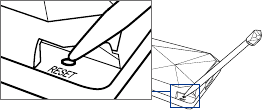
244 Managing Your Device
• Close programs which are not in use.
• Move files and e-mail attachments to the internal storage.
• Delete unnecessary files. Tap Start > Programs > File Explorer.
Tap and hold the file, and tap Delete.
• Delete large files. To find large files on your device, tap Start >
Programs > Search. In the Type list, tap Larger than 64 KB, and tap
Search.
•
In Opera Mobile or Internet Explorer Mobile, delete temporary Internet
files and clear history information.
• Remove programs you no longer use.
• Reset your device.
13.8 Resetting Your Device
Soft reset
Occasionally, you may need to reset your device. A soft (or normal) reset
of your device clears all active program memory and shuts down all
active programs. This can be useful when your device is running slower
than normal, or a program is not performing properly. A soft reset is
also necessary after the installation of some programs. If a soft reset is
performed when programs are running, unsaved work will be lost.
To perform a soft reset
1. Pull out the stylus.
2. Use the stylus to press the
RESET button located at
the opening of the stylus
compartment.
Your device restarts and
displays the Home screen.
Hard reset
You can also perform a hard reset (also known as a full reset). A hard
reset should only be performed if a normal reset does not solve a system
problem. After a hard reset, the device is restored to its default settings—

Managing Your Device 245
the way it was when you first purchased it and turned it on. Any programs
you installed, data you entered, and settings you customized on your
device will be lost. Only Windows Mobile® software and other pre-installed
programs will remain.
Warning! Your device will be set back to factory default settings. Make sure that
any additional installed programs and/or user data have been backed up
before you perform a hard reset.
To perform a hard reset
1. Pull out the stylus.
2. With the device turned on, press and hold the VOLUME DOWN and
ENTER buttons, then press the RESET button with the stylus tip.
3. Release the RESET button, but continue pressing the VOLUME DOWN
and ENTER buttons until you see this message on the screen:
This operation will delete
all your personal data,
and reset all settings
to manufacturer default.
Press VolUp to restore
manufacturer default, or
press other keys to cancel.
4. Release the VOLUME DOWN and ENTER buttons, then press the
VOLUME UP button to perform the hard reset, or press any other
button to cancel the reset.
Clear Storage
You can also use Clear Storage to reset your device back to factory default
settings and/or format the internal storage.
1. On the Home screen, slide to the Settings tab and then tap All
Settings.
2. On the System tab, tap Clear Storage.
3. In the drop-down menu, select whether to Clear Storage only,
Format internal storage only, or Clear storage and format internal
storage.
4. Enter “1234” and then tap Yes.
246 Managing Your Device
13.9 Windows Update
You can update Windows Mobile® on your device with the latest updates,
security patches or fixes, if these are available.
To set up Windows Update
The first time you run Windows Update, you need to set up how you want
Windows Update to check for patches on the Microsoft web site.
1. On the Home screen, slide to the Settings tab and then tap All
Settings.
2. On the System tab, tap Windows Update.
3. On the Update Setup screen, tap Next.
4. Choose how you want to check for updates, Manual or Automatic,
then tap Next.
Note If you select Automatic, you will be asked if you want to use your
current data plan to check for updates. Select or clear the Use my data
plan to check for and download updates check box and tap Next.
5. Tap Finish.
To check for updates
1. On the Home screen, slide to the Settings tab and then tap All
Settings.
2. On the System tab, tap Windows Update.
3. Tap Check Now.
Note Windows Mobile® updates may not be available at all times. Check the
Windows Mobile® web site for update information.
To change Windows Update options
1. On the Home screen, slide to the Settings tab and then tap All
Settings.
2. On the System tab, tap Windows Update.
3. Tap Menu and select the option you want to change.
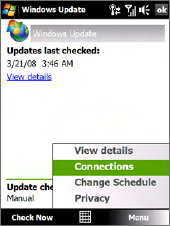
Managing Your Device 247
• Tap Connections to change
how the device connects to
the Internet when checking for
updates.
• Tap Change Schedule to change
how Windows Update checks for
Windows Mobile® updates.
13.10 Battery Saving Tips
How long your battery power lasts depends on the battery type and how
you use your device. Try the following to help conserve battery life:
• When the device is not in use, press POWER to switch off the display.
• On the Home screen, slide to the Settings tab and then tap All
Settings. On the System tab, tap Power > Advanced tab of the
Power settings screen. Here, you can specify the time before your
device automatically turns off the display and backlight to conserve
battery power. For optimum conservation, specify 3 minutes or less.
• On the Home screen, slide to the Settings tab and then tap All
Settings. On the System tab, tap Power > Backlight tab to adjust the
backlight brightness settings.
• Use the AC adapter to plug your device into an external power
outlet whenever possible, especially when using a modem or other
peripherals.
• Turn Bluetooth off when you are not using it. Make your device visible
to other devices only when you are trying to establish a Bluetooth
partnership. For more information about Bluetooth, see Chapter 9.
• Lower the volume.
248 Managing Your Device
• Close battery-intensive programs, such as the Camera, when you
are done using them. Make sure the programs are ended and are
not continuously running in the background. Refer to “Using Task
Manager” in this chapter for information on closing programs.

250 Appendix
A.1 Specifications
System Information
Processor Qualcomm® MSM7201A™ 528 MHz
Memory – ROM : 256 MB
– RAM : 192 MB DDR
– Internal storage: 4 GB
Note: Figures are the total ROM and RAM memory available for use
and storage. Since the memory is shared by the operating system,
applications, and data, the actual available memory is less than
what is specified.
Operating System Windows Mobile® 6.1 Professional
Power
Battery Rechargeable Lithium-ion or Lithium-ion polymer
battery, 900 mAh
Battery Life
(estimates)
Standby time: WCDMA: Up to 396 hours
GSM: Up to 285 hours
Talk time: WCDMA: Up to 270 minutes
GSM: Up to 330 minutes
Video call time: Up to 145 minutes
(The above are subject to network and phone usage.)
AC Adapter Voltage range/frequency: 100 - 240V AC, 50/60 Hz
DC output: 5V and 1A
Communications
Network HSPA/WCDMA (FDD Band I / V / VI):
900/2100 MHz
Up to 384 kbps up-link and 7.2 Mbps down-link speeds
Tri-band GSM/GPRS/EDGE:
900/1800/1900 MHz
(Band frequency and data speed are operator dependent.)
•
•
•
Internal Antenna Yes
Physical
Dimensions 102 mm (L) X 51 mm (W) X 11.35 mm (T)
Weight 110 g (with battery)

Appendix 251
Display
LCD Type 2.8-inch TFT-LCD flat touch-sensitive screen
Resolution 480 x 640 VGA resolution
Camera Module
Type Main camera: 3.2 megapixel color camera with auto focus
Second camera: VGA CMOS color camera
Resolution Photo: 3M (2048 x 1536)
2M (1600 x 1200)
1M (1280 x 960)
VGA (640 x 480)
QVGA (320 x 240)
Video: CIF (352 x 288)
QVGA (320 x 240)
QCIF (176 x 144)
Sub-QCIF (128 x 96)
•
•
Digital Zoom Up to 4X
Connections
I/O Port HTC ExtUSB™ (11-pin mini-USB and audio jack in one;
USB 2.0 high speed)
Wireless
Connections
Bluetooth® 2.0 with EDR
Wi-Fi® (IEEE 802.11 b/g)
•
•
Audio
Microphone/
Speaker
Built-in
Ring tone Supports MP3, AAC, AAC+, WMA, WAV, AMR-NB formats
40 polyphonic and standard MIDI format 0 and 1 (SMF) /
SP MIDI
•
•
Supported
Playback Formats
Windows Media® Player: MP3, MPEG-4, AAC, AAC+,
eAAC+, WMA, WAV, AMR, AMR-NB, AMR-WB, AWB,
SP-MIDI
TouchFLO™ 3D: MP3, MPEG-4, WMA, AAC, AAC+
•
•

252 Appendix
Controls
Device Control TouchFLO™ 3D
Touch-sensitive navigation control with ENTER button
HOME button
BACK button
Phone buttons: TALK/SEND and END
POWER button
VOLUME CONTROL buttons
RESET button
•
•
•
•
•
•
•
•
Others
Special Features FM radio with RDS
GPS and A-GPS ready
(GPS navigation software not included)
•
•
A.2 Regulatory Notices
Regulatory Agency Identifications
For regulatory identification purposes, your product is assigned a model
number of DIAM190.
To ensure continued reliable and safe operation of your device, use only the
accessories listed below with your DIAM190.
The Battery Pack has been assigned a model number of DIAM160.
Note This product is intended for use with a certified Class 2 Limited Power Source,
rated 5 Volts DC, maximum 1 Amp power supply unit.
Federal Communications Commission Notice
This device complies with part 15 of the FCC Rules. Operation is subject
to the following two conditions: (1) This device may not cause harmful
interference, and (2) this device must accept any interference received,
including interference that may cause undesired operation.
This equipment has been tested and found to comply with the limits for a
Class B digital device, pursuant to Part 15 of the FCC Rules. These limits are
designed to provide reasonable protection against harmful interference in
a residential installation. This equipment generates, uses, and can radiate
Appendix 253
radio frequency energy and, if not installed and used in accordance with
Appendix 253
Appendix 247the instructions, may cause harmful interference to radio
communications. However, there is no guarantee that interference will not
occur in a particular installation. If this equipment does cause harm-ful
interference to radio or TV reception, which can be determined by turning
the equipment on and off, the user is encouraged to try to correct the
interference by one or more of the following measures:
• Reorient or relocate the receiving antenna.
• Increase the separation between the equipment and receiver.
• Connect the equipment into an outlet on a circuit different from that
to which the receiver is connected.
• Consult the dealer or an experienced radio or television technician for
help.
Modifications
The FCC requires the user to be notified that any changes or modifications
made to the device that are not expressly approved by High Tech Computer
Corporation may void the user’s authority to operate the equipment.
Safety Precautions for RF Exposure
Use only original manufacturer-approved accessories, or accessories that do
not contain any metal.
Use of non-original manufacturer-approved accessories may violate your
local RF exposure guidelines and should be avoided.
Exposure to Radio Frequency (RF) Signals
Your device contains a radio transmitter and receiver. The radiated output
power is far below the international radio frequency exposure limits. These
limits are part of comprehensive guidelines and establish permitted levels
of RF energy for the general population. The guidelines are based on the
safety standards previously set by international standards bodies:
• American National Standards Institute (ANSI) IEEE. C95.1-1992
• National Council on Radiation Protection and Measurement (NCRP).
Report 86. 1986
254 Appendix
• International Commission on Non-Ionizing Radiation Protection
(ICNIRP) 1996
• Ministry of Health (Canada), Safety Code 6. The standards include a
substantial safety margin designed to assure the safety of all persons,
regardless of age and health.
The exposure standard for wireless mobile phones employs a unit of
measurement known as the Specific Absorption Rate, or SAR. The standard
incorporates a substantial margin of safety to give additional protection for
the public and to account for any variations in usage.
As with other mobile radio transmitting equipment, users are advised that
for satisfactory operation of the equipment and for the safety of personnel,
it is recommended that no part of the human body be allowed to come too
close to the antenna during operation of the equipment.
Your device has an internal antenna. Use only the supplied integral antenna.
Use of unauthorized or modified antennas may impair call quality and
damage the phone, causing loss of performance and SAR levels exceeding
the recommended limits as well as result in non-compliance with local
regulatory requirements in your country.
To assure optimal phone performance and ensure human exposure to RF
energy is within the guidelines set forth in the relevant standards; always
use your device only in its normal-use position. Do not touch or hold the
antenna area unnecessarily when placing or receiving a phone call. Contact
with the antenna area may impair call quality and cause your device to
operate at a higher power level than needed. Avoiding contact with the
antenna area when the phone is IN USE optimizes the antenna performance
and the battery life.
Body-worn measurements were tested for typical body-worn operations
with the back of the device kept 1.5 cm from the body.
SAR Information
1.02 w/kg @1g(Head)
1.35 w/kg @1g(Body)
Appendix 255
Telecommunications & Internet Association (TIA)
Safety Information
Pacemakers
The Health Industry Manufacturers Association recommends that a
minimum separation of six inches be maintained between a handheld
wireless phone and a pacemaker to avoid potential interference with the
pacemaker. These recommendations are consistent with the independent
research by and recommendations of Wireless Technology Research.
Persons with pacemakers:
• Should ALWAYS keep the phone more than six inches from their
pacemaker when the phone is turned ON.
• Should not carry the phone in a breast pocket.
• Should use the ear opposite the pacemaker to minimize the potential
for interference. If you have any reason to suspect that interference is
taking place, turn the phone OFF immediately.
Hearing Aids
Some digital wireless phones may interfere with some hearing aids. In the
event of such interference, you may want to consult your service provider,
or call the customer service line to discuss alternatives.
Other Medical Devices
If you use any other personal medical device, consult the manufacturer
of your device to determine if they are adequately shielded from external
RF energy. Your physician may be able to assist you in obtaining this
information.
Turn the phone OFF in health care facilities when any regulations posted in
these areas instruct you to do so. Hospitals or health care facilities may be
using equipment that could be sensitive to external RF energy.
WEEE Notice
The Directive on Waste Electrical and Electronic Equipment (WEEE), which
entered into force as European law on 13th February 2003, resulted in a
major change in the treatment of electrical equipment at end-of-life.
The purpose of this Directive is, as a first priority, the prevention of WEEE,
and in addition, to promote the reuse, recycling and other forms of recovery
of such wastes so as to reduce disposal.

256 Appendix
The WEEE logo (shown at the left) on the product or on its box
indicates that this product must not be disposed of or dumped
with your other household waste. You are liable to dispose of all
your electronic or electrical waste equipment by relocating over
to the specified collection point for recycling of such hazardous
waste. Isolated collection and proper recovery of your electronic
and electrical waste equipment at the time of disposal will
allow us to help conserving natural resources. Moreover, proper
recycling of the electronic and electrical waste equipment will
ensure safety of human health and environment. For more
information about electronic and electrical waste equipment
disposal, recovery, and collection points, please contact your
local city center, household waste disposal service, shop from
where you purchased the equipment, or manufacturer of the
equipment.
RoHS Compliance
This product is in compliance with Directive 2002/95/EC of the European
Parliament and of the Council of 27 January 2003, on the restriction of the
use of certain hazardous substances in electrical and electronic equipment
(RoHS) and its amendments.
Index
Symbols
3G 131
A
A2DP 158
ActiveSync
- about 199
- set up 93
- synchronize with computer 94
- synchronize with Exchange
Server 118
Add and remove programs 201
Adobe Reader LE 199, 202
Airplane Mode 52, 210
Alarm 238
Album
- about 181, 199
- close Album 185
- play back video 185
- select a photo or video to view 181
- view an image 182
Attachment
- add to e-mail 112
- download 114
- set IMAP4 to automatically receive
attachments 116
- set Outlook to automatically receive
attachments 116
Audio Booster 194, 199
B
Back cover
- remove 25
Backlight
- adjust brightness 236
- set backlight timeout 236
Back up data 220
Basic settings 235
Battery
- battery information 26
- charge battery 28
- install 27
- remove 27
- save battery power 131, 247
Beam via Bluetooth 159
Block Recognizer 87
Bluetooth
- about 156
- Bluetooth Explorer 160, 199
- Bluetooth file sharing 160
- Bluetooth shared folder 160
- hands-free headset 158
- modem 147
- modes 156
- partnership (pairing) 157
- SIM Access Profile (SAP) 58
- stereo headset 158
- synchronize 96
- turn on and o 210
- visible 156
Bluetooth Explorer 199
258 Index
C
Calculator 199
Calendar
- about 198
- create appointment 203
- send appointment 205
- view appointment 204
Call History 51
Calling
- from Contacts 47
- from Home screen 47
- from Phone screen 47
Camera
- about 170, 199
- Advanced Options
178
- capture modes 170
- controls 172
- file formats 171
- icons 172
- Menu Panel 174
- specifications 251
- zooming 175
Car kit phones 58
Clear Storage 245
Clock & Alarms 232, 235, 238
Comm Manager 199, 210, 234
Compact QWERTY 82
Company Directory 125
Conference call 49
Configure data connection settings 30,
131, 239
Connect device to Internet
- Dial-up 132
- GPRS/3G 131
- start a connection 133
- ways of connecting 128
Connection Setup 30, 36, 239
Contacts 198, 206
Contacts Picture capture mode 171
Copy
- contacts to SIM card 216
- copy and manage files 230
- media files from PC to device 187
- SIM contacts to device 216
D
Device name 237
Dial-up 132
Dimensions and weight 250
Direct Push 120, 210
Disconnect data connection 210
Download
- download complete e-mail 113
- e-mail download settings 109, 115
- file attachments 114
- Java applications 214
- satellite data 167
- synchronize e-mails 114
- web feeds 149
Draw 212
E
E-mail
- Internet e-mail account (POP3/
IMAP4) 108
- mail server settings 109
- Mail tab (Home screen) 66
- send 112
- settings (POP3/IMAP4) 109
- setup wizard 108
- synchronize 90, 114, 118
- types of e-mail accounts 107
EDGE 131
Emergency call 48
Emoticon
- MMS 105
- Windows Live Messenger 146
Index 259
Equalizer 195
Excel Mobile 198, 211
Exchange Server 118
F
Favourite contacts 63
File Explorer 199, 230
Find contact
- Company Directory 125
- on device 208
Finger gestures 76
Finger panning 77
Finger scrolling 76
FM Radio 190, 199
Forward e-mail 114
Full QWERTY 81
G
Games 199
Getting Started 199
Google Maps 164, 199
GPRS 131
GPRS Monitor 200, 218
GPS 166, 167, 200
H
Hard reset 244, 245
Help 198
Home screen 35, 60
Home tab (Home screen) 62
I
IMAP4 108
Input methods
- Block Recognizer 87
- Compact QWERTY 82
- Full QWERTY 81
- Letter Recognizer 87
- Phone Keypad 83
- Transcriber 88
Input Panel 80
Input Selector arrow 80
International call 48
Internet 128
Internet e-mail 108
Internet Explorer Mobile 198
Internet Sharing 147, 199
Internet tab (Home screen) 72
J
Java
- about 200
- create folders 215
- install MIDlets/MIDlet suites from
device 214
- install MIDlets/MIDlet suites from
Internet 214
- manage MIDlets/MIDlet suites 215
- uninstall MIDlets 215
- update a MIDlet/MIDlet suite 215
L
Letter Recognizer 87
Library
- Music tab (Home screen) 69
- Windows Media Player Mobile 187
Live Messenger 145
M
Mail tab (Home screen) 66
Meeting request 124, 205
Memory 40, 243, 250
Messages tab (Home screen) 65
Messaging
- about 98, 198
- e-mail 107, 108, 111
- multimedia (MMS) 102
- text (SMS) 99
Messenger 145, 200
260 Index
Microsoft Office Mobile 198, 211
MIDlet/MIDlet suite 214
MMS
- about 102
- add audio clip 105
- add photo/video 104
- add text 105
- blacklist 106
- create MMS message 104
- MMS settings 102
- reply message 106
- view message 106
MMS Video capture mode 171
Modem
- Bluetooth 147
- USB 147
MP3 Trimmer 195, 200
Multimedia 102, 169
Multitap 84
Music tab (Home screen) 68
N
News channels (web feeds) 149
Notes 200, 212
Now Playing
- Music tab (Home screen) 68, 69
- Windows Media Player Mobile 187
Numeric and Symbol Mode 86
O
Office Mobile 198, 211
OneNote Mobile 198, 211
Open PDF file 202
Opera Mobile 134, 200
P
Panorama capture mode 171
Password 242
People tab (Home screen) 63
Phone 46, 198
Phone Keypad 83
Phone services 238
Photo capture mode 171
Photos and Videos tab (Home screen) 67
Pictures & Videos 200
Picture Theme capture mode 171
PIN 46, 242
Playlists
- Music tab (Home screen) 70
- Windows Media Player Mobile 190
Play media 189
Play music
- Music tab (Home screen) 68
- Windows Media Player Mobile 189
Podcasts 152
POP3 108
PowerPoint Mobile 198, 211
Programs 198
Programs tab (Home screen) 75
Put call on hold 49
Q
QuickGPS 167, 200
Quick menu 40, 240
R
Record
- voice note 213
- voice recording 223
Regional Settings 233, 236
Regulatory notices 252
Remote Desktop Mobile 200
Index 261
Reply
- e-mail 114
- MMS 106
- text (SMS) 65, 101
Reset
- clear storage 245
- hard reset 244
- soft reset 244
Review screen (Camera) 177
Ring tone 74, 237
Ring type 237
RSS Hub
- about 149, 200
- headline list 151
- news channels 149
- podcasts 152
- summary view 152
S
Safety information 5
Screen text size 236
Search 200
Send
- e-mail 112
- MMS message 104
- text message (SMS) 99
Settings (Connections tab)
- Advanced Network 234
- Beam 234
- Bluetooth 234
- Connections 131, 132, 234
- Connection Setup 234, 239
- Domain Enroll 234
- SMS Service 235
- USB to PC 95, 235
- Wi-Fi 130, 235
- Wireless LAN 130, 235
Settings (Personal tab)
- Buttons 231
- Input 231
- Lock 231, 242
- Menus 231
- Owner Information 231
- Phone 232, 237, 238
- Sounds & Notifications 232, 238
- Today 232
- TTY 232
- Voice Speed Dial 227, 232
Settings (System tab)
- About 232, 237
- Certificates 232
- Clear Storage 232, 245
- Clock & Alarms 232, 235, 238
- Device Information 232
- Error Reporting 232
- External GPS 233
- Hearing Aid Compliance 233
- Key Lock 233
- Long Press End Key 233
- Managed Programs 233
- Memory 233
- Microphone AGC 233
- Power 233
- Regional Settings 233, 236
- Remove Programs 202, 233
- Screen 233, 236
- Task Manager 233, 240
- TouchFLO 39, 77, 234
- Windows Update 234, 246
Settings tab (Home screen) 74
SIM Access Profile (SAP) 58
SIM card
- install 25
- PIN 242
- remove 26
262 Index
SIM Manager
- about 200, 216
- copy contacts to SIM card 216
- copy SIM contacts to device 216
- create SIM contact 216
Sleep mode 31
Smart Dial 56
SMS 65, 99, 112
Soft reset 244
Sounds & Notifications 232, 238
Spb GPRS Monitor 200, 218
Speakerphone 50
Specifications 250
Speed Dial 51
Sprite Backup 200, 220
Start menu 39
Status icons 36
STK (SIM Tool Kit) Service 201
Streaming Media 141, 200
Swap/switch calls 49
Synchronize
- ActiveSync 94
- change information types 94
- music and videos 96
- via Bluetooth 95
- Windows Media Player 187
- Windows Mobile Device Center 91
- with computer 74, 94
- with Exchange Server 74, 118
T
T9 84
Task Manager 233, 240
Tasks 201, 222
Text messages
- copy from SIM card 101
- copy to SIM card 101
- create new message 99
- Messages tab (Home screen) 65
- send 100
Text size (screen) 236
TouchFLO 3D 59
Transcriber 88
Troubleshoot
- sync connection 95
- Windows Media Player Mobile 190
Turn device on and off 30
Turn phone function on and off 210
Turn the phone function on and off 52
U
USB modem 147
USB to PC 95, 235
V
Vibrate 38, 42, 50, 238
Video call
- about 53
- answer video call 53
- end video call 53
- make video call 53
- settings 54
Video capture mode 171
Voice call
- about 47
- answer call 48
- end call 50
- make call 47
Voicemail 48
Voice Recorder 201, 223
Voice Speed Dial
- about 201, 225, 232
- create
- voice tag for phone number 225
- voice tag for program 226
- make call or launch program 226
Index 263
Voice tag
- create
- for phone number 225
- for program 226
- make call or launch program 226
W
Weather tab (Home screen) 72
Wi-Fi 128, 210
Windows Live 143, 201
Windows Live Messenger 145, 200
Windows Media Player Mobile
- about 201
- file formats 185
- menus 187
- playlists 190
- troubleshoot 190
Windows Mobile Device Center 91
Windows Update 234, 246
Word Mobile 198, 211
Y
YouTube 137, 201
Z
ZIP
- about 201, 227
- create archive 228
- open zip file and extract files 227
Zooming
- Camera 175
- finger gestures 77
264 Index

